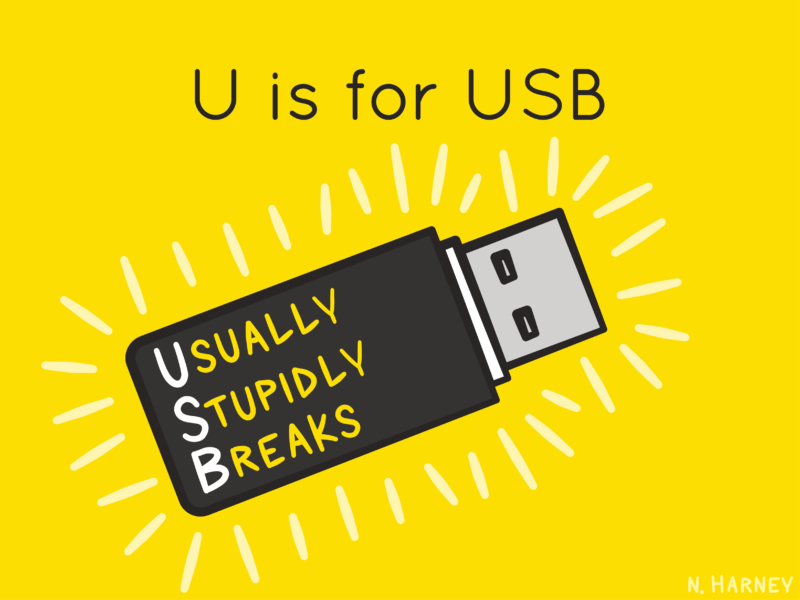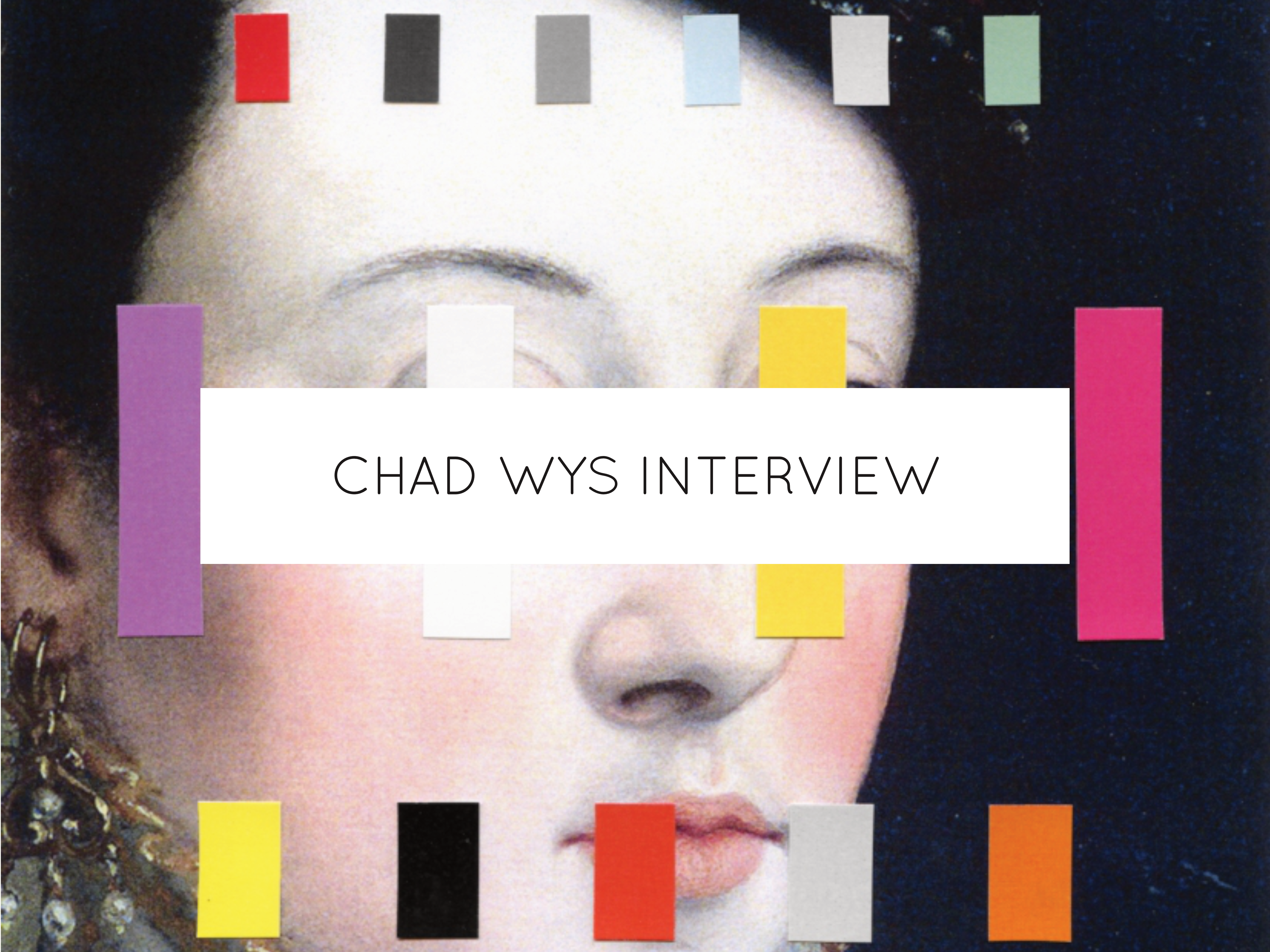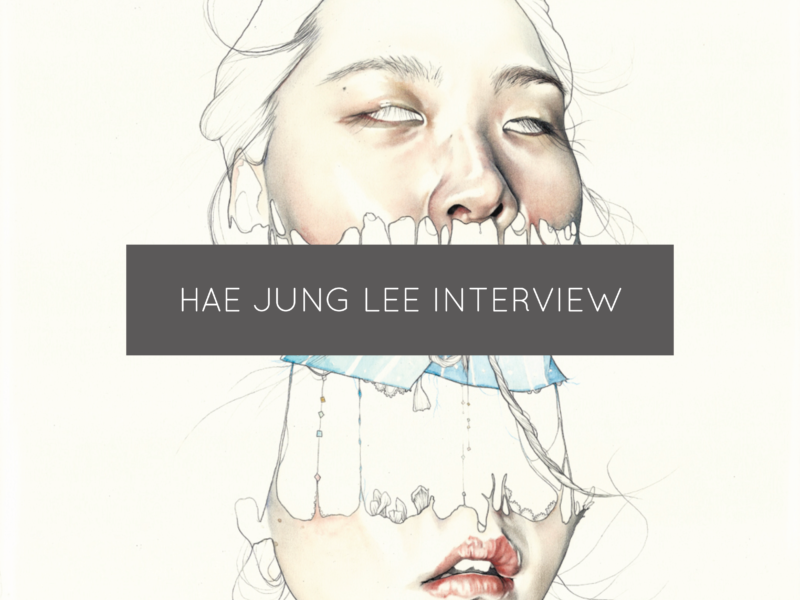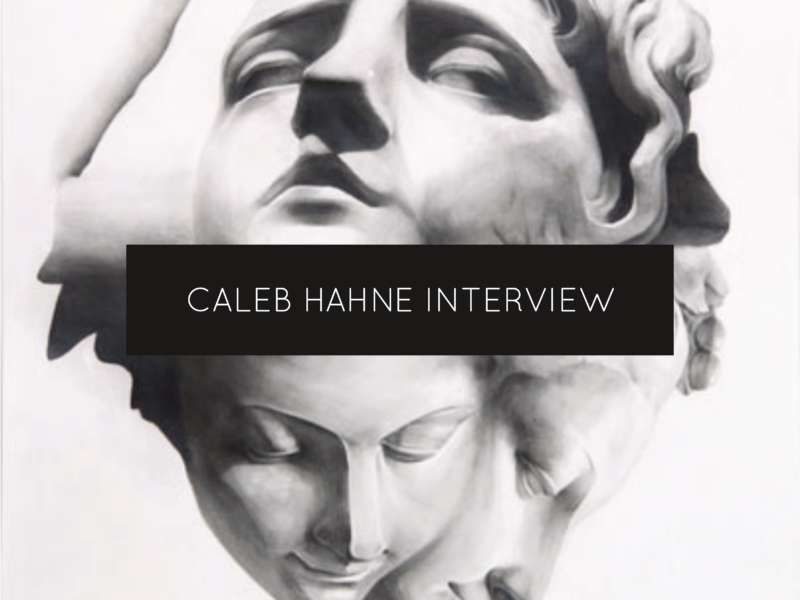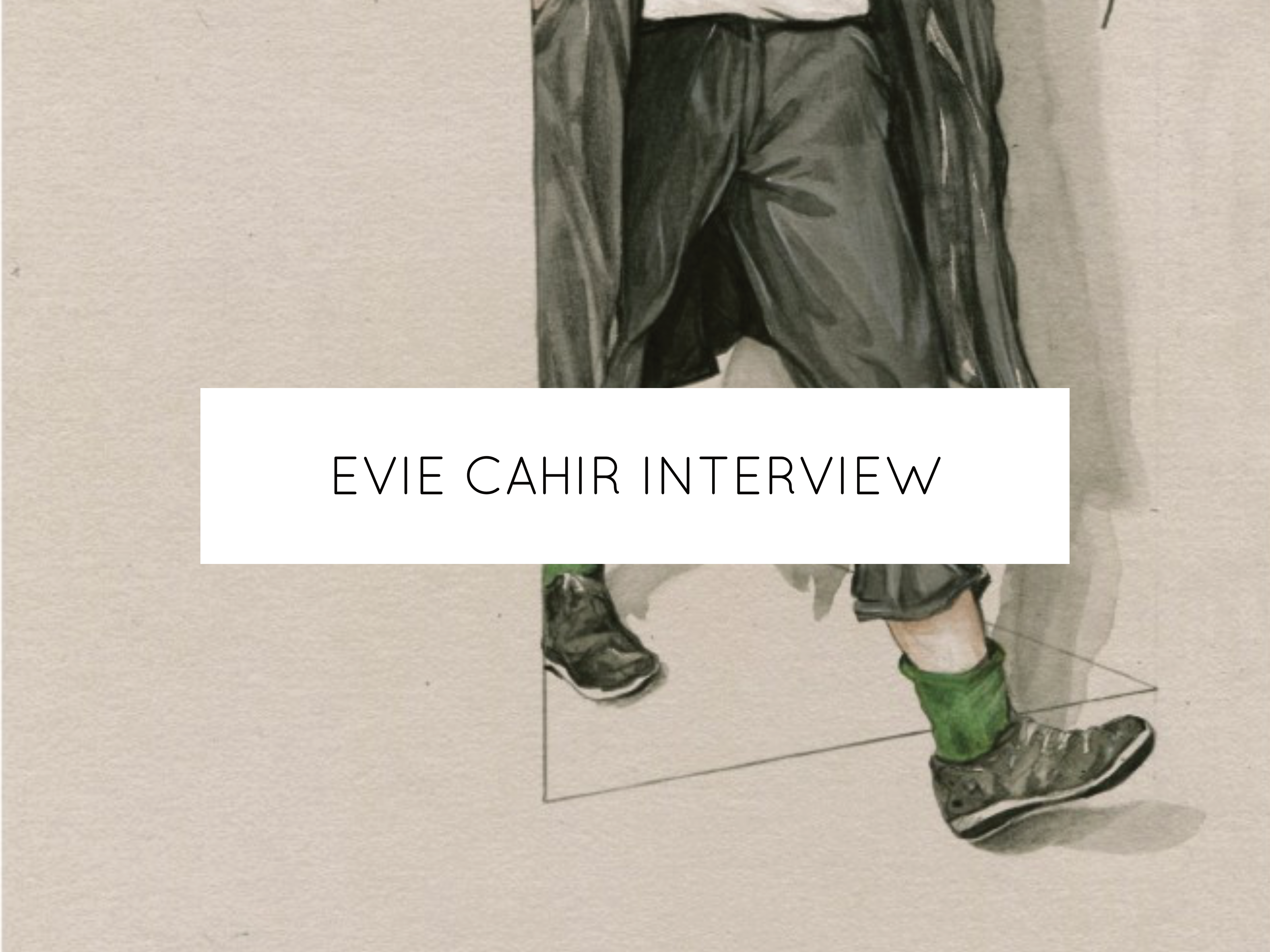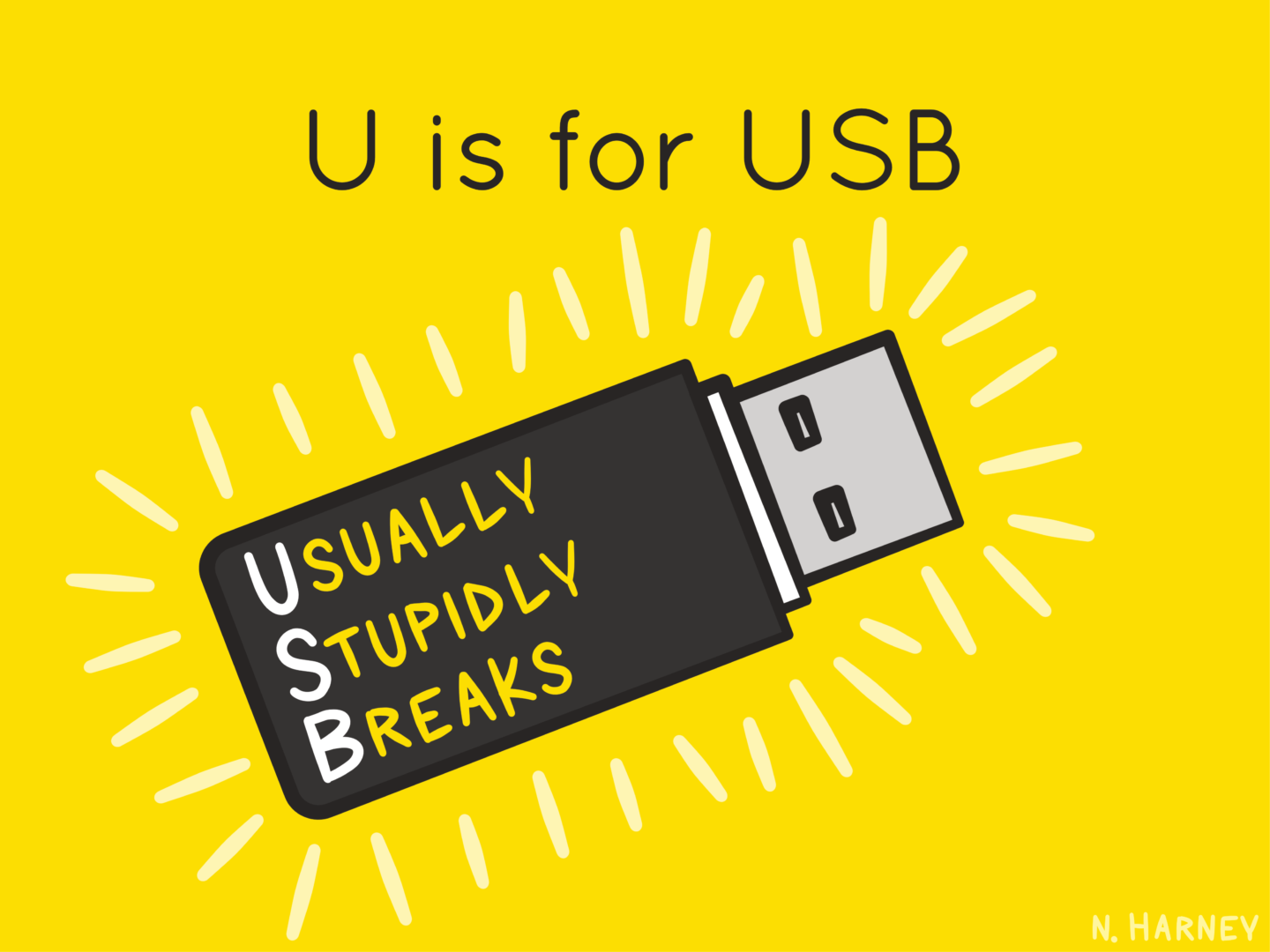
Throwback Interview with Chad Wys (2014)
It’s the end of the week which means its the end of my series of throw back interviews. I don’t want to say I’ve saved the best until last, but I definitely think this was the interview I was most excited to get to do.
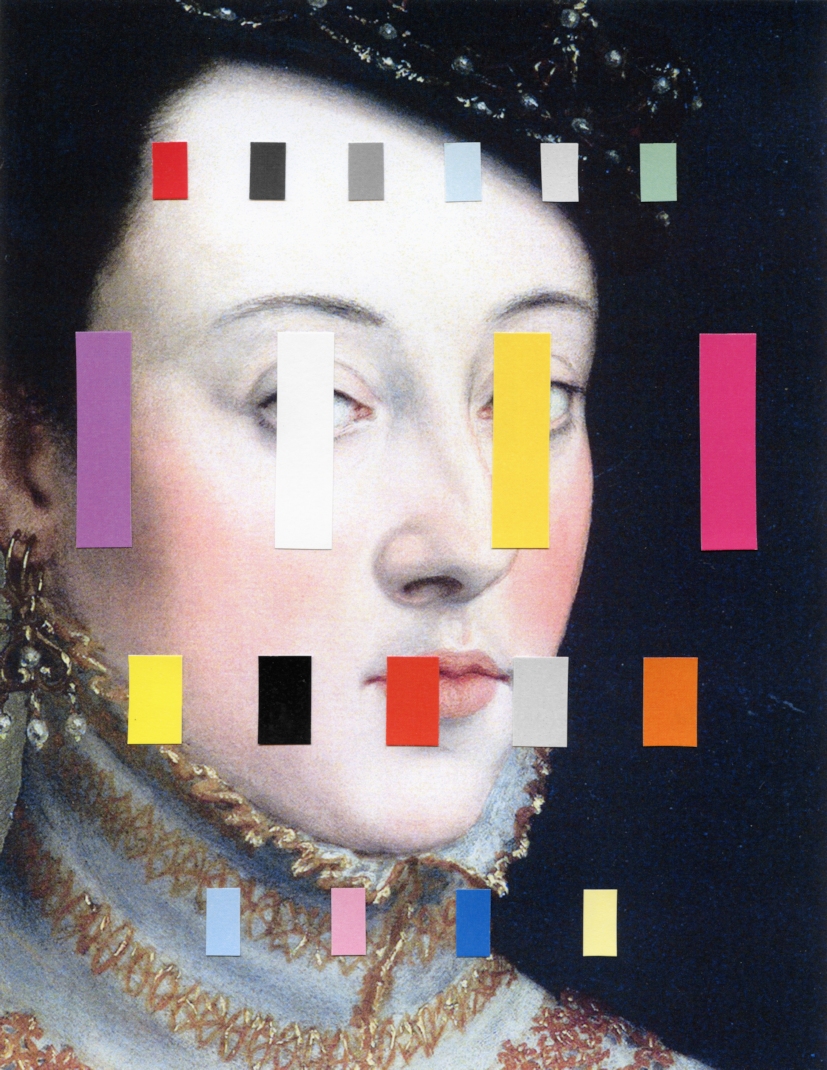
PORTRAIT WITH A SPECTRUM 4/CHAD WYS
Chad Wys is one of my favourite contemporary artists. I tried to start this article with something that sounded more professional than that, but I thought I should just be honest. His work is conceptually focused without being aesthetically compromised, it’s approachable without being dumbed down, and it’s fun without ever lacking gravitas.
After Wys completed Masters at Illinois State University, his studies in art theory, criticism and philosophy led to an interest in conceptualism, minimalism and the postmodern as well as the idea of “objecthood”. A major theme in his work, “objecthood”, for Wys, covers questions of “how we decorate our lives with arbitrary as well as meaningful things; how we objectify the ones we love and the strangers we see; how we objectify pain and death; how we objectify complex and sensitive cultural histories.”
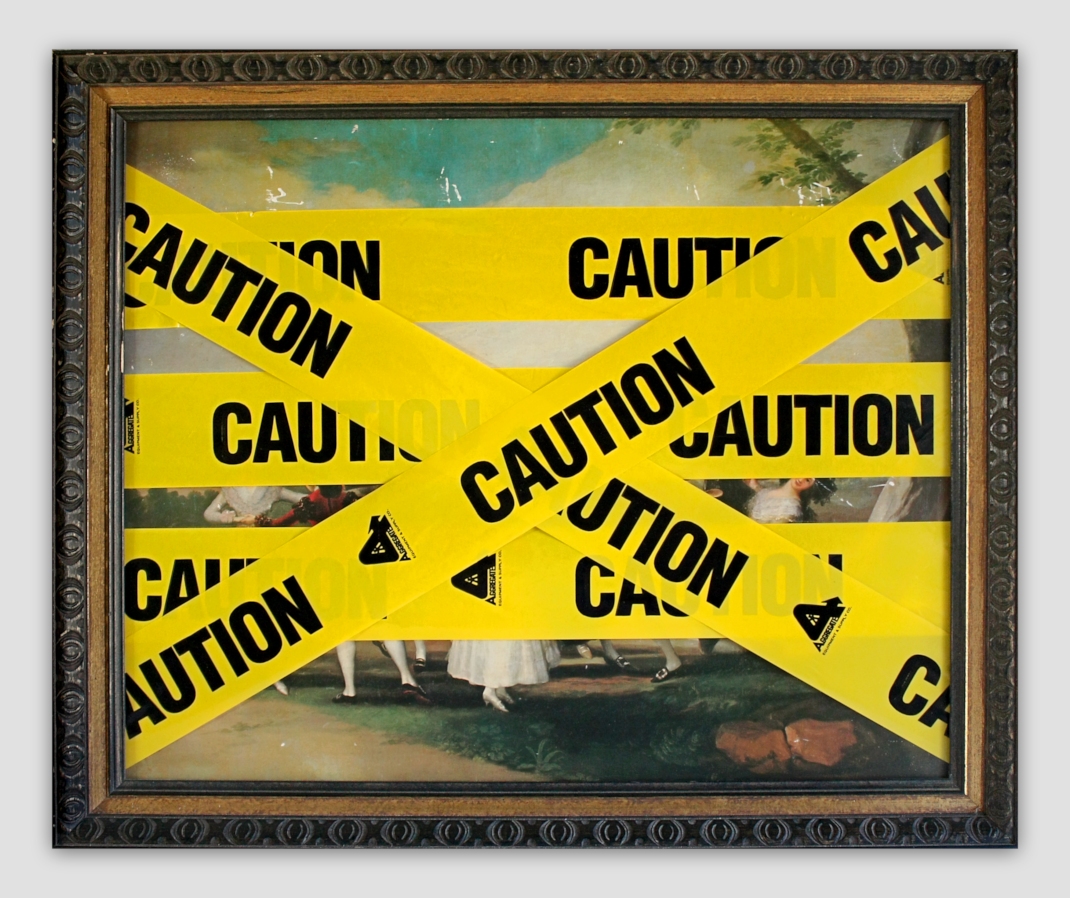
CAUTION GOYA/CHAD WYS
Although he describes himself as an “apprehensive artist”, the immediate impact of his adept use of colour and form mean it’s hard to imagine his skill going to waste. When working canvases of readymade works Wys either commits to a completely complementary or a caustically contradictory colour palette. The “aggressive” addition of foreign colour to the familiar, is Wys’s way of creating new meaning from the ensuing tension between ‘paint’ and ‘canvas’. This satisfying visual disharmony is a form of destruction in its own right, asking the audience to question their own response to reviewing a reclaimed object. It is the erection of these barriers of colour “between the viewer and the object through which one must negotiate an understanding of what is both present and hidden” that Wys sees as his “distinctive vocabulary suitable for not only sharing ideas but provoking serious deliberation in the viewer”
“Sure, I’ve got some ideas I want to get across, and aesthetics will always be my main tool for doing just that, but it’s out of my hands by the time it gets to you.”
His most popular pieces feature reproductions of images like those he saw in the “picture books devoted to 19th and 20th century painting” that captured his imagination at a young age which have been reworked and reimagined. In his choices of media Wys experiments with mixing the technological and the traditional with a view “to blur the boundaries between the material and the digital”. This range of visual sources, styles and suggestions make the audience unquestionably aware of the reappropriation at work in front of them. Consequently, the marks that Wys leaves on these readymades can’t help but to instantly evoke images of “R.Mutt 1917” signed on a urinal in their sentiment and often their line quality. These acts of applying contemporary ideas and marks to objects from the past plays with ideas of social constructs, meaning and influence. Wys strikes up this multifaceted conversation with the viewer to engage them into considering their own conceptions of object ownership as a marker of both social and self worth.
“When people get angry at me for “stealing” and/or “vandalizing” another artist’s “hard work,” they unwittingly underscore the complex web of problems at play in our visual world, since, really, I’m doing nothing of the sort; quite the contrary in most cases, I’m pointing out that the original was “vandalized” the moment it was reproduced”
Additionally, Wys only works on mass reproductions of works further raising questions of both image ownership and what it truly means for a work to be an original, especially “in the age of the Internet reproductions, which are now digitally transmitted instantly and endlessly, are more present and more malleable than ever.” Wys warns us as observers to “be as vigilant as ever to distinguish between aesthetics and context, form and function, and the re-presentation of likenesses and the disassociation from referents.”
“Processing “life” and art through a screen requires a good deal of adaptation, as does presenting one’s “life” and one’s art through various screens. I choose to look at that sort of adaptation as an opportunity, not a compromise.”
But, ultimately, what lies in Wys’s work is entirely in your hands as “in the end as in the beginning [he is decidedly postmodern leaving] the activity, reception, and understanding of my work entirely in the viewer’s hands.”
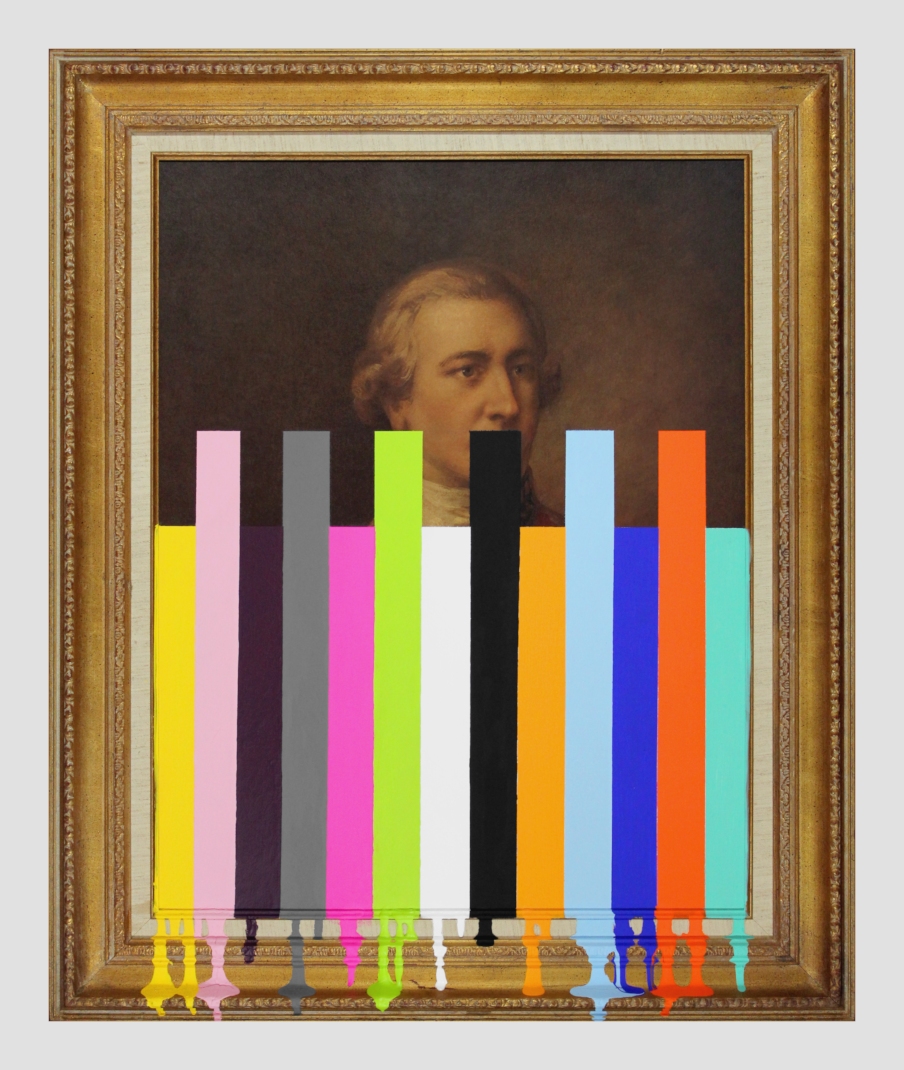
GARAGE SALE PICTURE OF AN ENGLISH OFFICER/CHAD WYS
You’re currently on Twitter, Tumblr, Behance, Society6, Etsy and you have your own website. Why did you feel it was necessary to cover so many different social media outlets, is it a case of simply ‘getting your name out there’ or do they serve different purposes for you?
Don’t forget the behemoth: Facebook. Superficially, each platform is suited to different modes of information, and so they cause people to interact differently even with identical content. The same people can follow me on each platform but expect a different level, or style, of engagement from each. For example, I’ve found that the casual thoughts I tend to Tweet don’t go over quite as well on Facebook or Tumblr (Twitter being a space for short, subtle observations), and the images I share aren’t generally as effective on Twitter as opposed to a visually-rich platform like Tumblr.
To a large extent proliferating out onto multiple social networks is an effort to be seen and read by as many people as possible, what is your motivation behind gaining an audience?
Networking and name recognition has never been a goal of mine, and it still isn’t. Primarily, I enjoy the process of communication and I enjoy aspects of the different ways of interacting that each of the these platforms provides. Ultimately, I see some value in sharing my thoughts and creations in this way. There are still more platforms for me to try and still others I’ve determined aren’t as useful. However, I think one ought to use these tools responsibly because drowning in the deep end of narcissism is easy.
More and more artists today are putting their work online, do you think an online presence is essential to being a successful (commercially or otherwise) at present?
I doubt it’s essential. The art world still seems to be dominated by the politics of collecting and selling and the influence of subjectivity from a select few, which still seems to originate in particular real-world, geographic hubs like New York, London, LA, et al. But I think being technologically-present, -aware, and -fluent will always be useful, especially for communicators such as artists (and especially for emerging artists).
It’s obvious that the Internet is not a fad and that it’s only the most powerful communications tech the world has ever known. An artist who doesn’t wish to exploit that premise is, for whatever reason, proactively invested in preserving traditions of the past. That’s their prerogative and I certainly won’t judge them harshly for it; there are good reasons to base one’s practice and the reception of one’s work in the material world. However, I think the Internet is so pervasive and so utterly powerful that it has become the norm. To not have a portfolio website and to be a visual artist is to be a kind of “off-grid rebel,” or you’re someone who hasn’t caught-up, or you’re someone who’s made a particular set of choices that exclude the massive elephant in the communications room, or you’re so well-liked by the correct art world elite that you don’t need to do much of anything to assert yourself.
The advantage to being an Internet-present artist is fairly clear: access to a virtually unlimited audience; while the disadvantage is also fairly evident: there’s practically infinite noise in which to get lost, and the noise is chaotic and difficult to overcome on one’s own terms. Adaptation is a prerequisite to using the Internet and especially social media. I can understand why some would not be willing to adapt to tech systems of this sort because that can easily be construed, and I think often wrongly so, as compromise. You’ll have to ask someone who avoids the Web why they do so, but you’ll have to dig up their phone number or unearth their street address first (maybe that’s the advantage!).
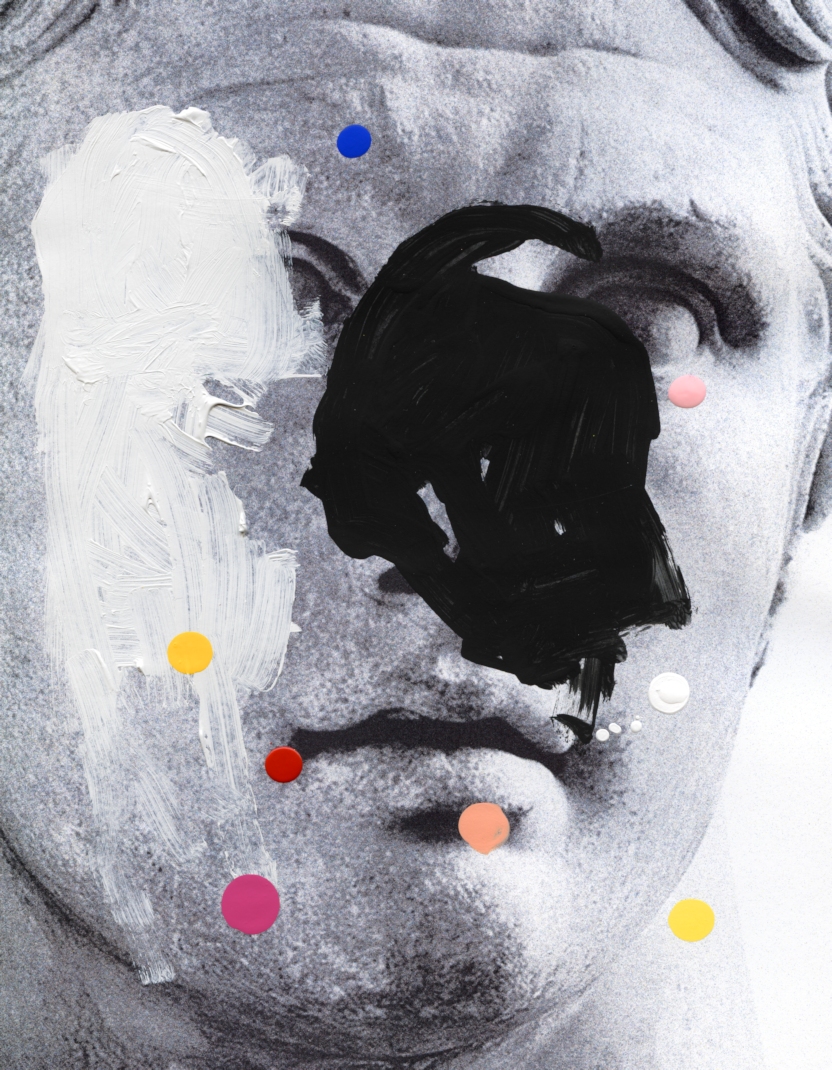
COMPOSITION 476/CHAD WYS
You refer the internet as “the most powerful communications tech the world has ever known”, I was wondering if you feel like there’s a dialogue then between you and your audience, for example the people you mentioned being angry you use of other works? And if so, how do you feel that dialogue informs you or alters you perspective or is even part of your work?
There’s certainly some dialogue there, and there’s always potential for more. That’s part of what draws me to the Internet: it can be as “one-sided” as a typical gallery show, or it can spur on engagement with people from any corner of the globe. The folks who react vehemently to my work generally aren’t up for a debate; much of the time they’ve made a series of determinations about what I’m doing, and that’s that. I’ve engaged with a few of them over the years–either they have contacted me directly and opened up a line of communication or I’ve found their public comments and I’ve engaged. Whether or not they’re receptive in the first place has a bearing on how constructive the dialogue becomes; though I often find that people who are receptive to new and different ideas aren’t likely to resent my work. But these dialogues do happen. The key is not to get involved with arguments where I am, for example, put in the position of defending all that is, ever has been, and ever will be “art”… what a hopeless and uncomfortable spot to be in.
What do you mean by the “noise” of the internet? And what’s involved in adapting to online communication?
Well, adaptation can be as simple as learning to use 140 characters effectively on Twitter, or learning to edit one’s oeuvre down to a manageable size on one’s personal Website. One has to adapt to the tools one chooses to use, or one has to seek-out or invent new tools to fulfill one’s goals. Processing “life” and art through a screen requires a good deal of adaptation, as does presenting one’s “life” and one’s art through various screens. I choose to look at that sort of adaptation as an opportunity, not a compromise.
As for the “noise” of the Net: simply, there are a lot of us. My attentions are strained through my various information “feeds,” whether on Facebook, Instagram, Twitter, or what have you. There is a lot of information, potentially limitless amounts, and it’s impossible for each of us to process everything. I think we can easily become desensitized to images, text, art, et al (not only online, but everywhere). It becomes necessary to process information differently and more rapidly and each of us grapples with that in our own way. It’s easy to gloss over an artwork to which one might otherwise deeply respond; it’s easy for one’s work to get lost in the shuffle of information, to be ignored, or to be shallowly received and unfairly dismissed. There are different solutions for overcoming the “noise” for different goals. I think the solution to being widely seen and perhaps even understood as an artist is to be present, persistent, consistent, and to create “good” work. But the better “remedy” for the social noise is to not expect to overcome it, and to not desire to overcome it; it ceases being an obstacle at that point.
In the statement on your website you say that “notion of object” is a major strand in your work, how would you say that “objectification” has been changed by the free availability of (quite often sourceless) images on the web?
That’s an important and sizeable question and it strikes to the core of my practice. My work generally grapples with art (history) and decoration/ornamentation and how we process our experiences of these things, so along those lines the game totally changed at the dawn of “the age of mechanical reproduction” (to lift a line from 20th century German modernist Walter Benjamin). Art’s “aura,” Benjamin argued, is dislodged, displaced, or diminished as reproduction is mastered and streamlined through advanced machinery. For example, viewers stopped observing the painting and started observing photographs of the painting, and in so doing lost a bit of the influence/experience/meaning of the original (for it’s no longer necessary to observe the enormous canvas and the vivid color palette of, let’s say, a Klimt painting since it has been reduced to a two-inch black and white illustration for rapid consumption).
Computers, and the ease of the anonymous digital imaging and text that you speak of, are simply (but complexly) a continuation of the industrialization of aesthetic and intellectual experiences that has coincided with the industrial revolution. I’m sympathetic but resistant to Benjamin’s notion that within each artwork there is an idealized “aura” waiting to be accessed by a special kind of recipient; that’s quite modernist and dated in its determinism. But I think the spirit of Benjamin’s cultural theory–which is that reception matters and is malleable through re-presentation–continues to be extremely prescient, and this is why I grapple with image- and object-based reproductions as my source materials: information is easily displaced and manipulated in the age of the Internet, so we have to be, as ever, vigilant and informed receivers. The marks I make on the particular materials I appropriate are my attempt to draw attention to the digital/mechanical outsourcing of experience… so by creating a new, modified experience through color and form, in my small way I’m trying to draw out the objectification, in some instances quite literally, of visual-intellectual experience. The Internet is a huge, glorious, and horrible part of this dynamic.
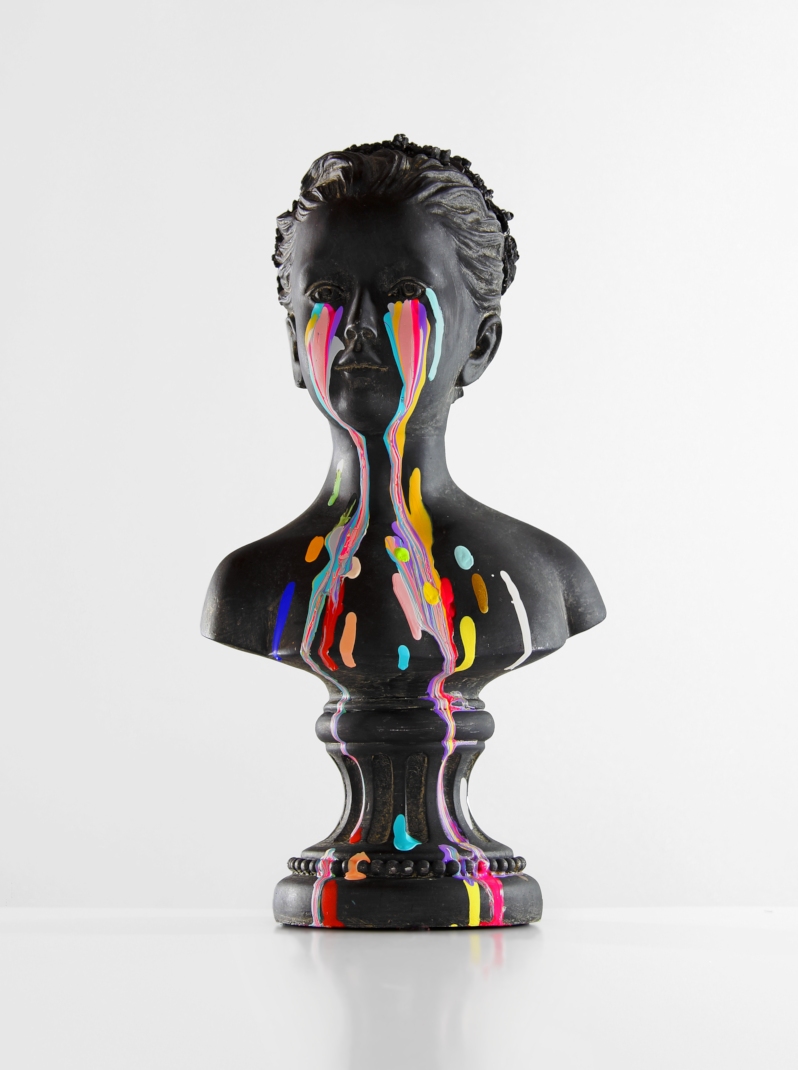
THE GIRL WITH STARS IN HER EYES/CHAD WYS
You also say that you “enjoy taking contemporary ideas into the past”, could it be said you are doing the reverse as well? As in your readymades you take older, quite often 19th century, pieces of art, rework them and then put them into a thoroughly modern context – the internet.
Yes, I think that’s true; certainly aesthetically speaking. But much of what I do, much of the material I source, is distinctly contemporary (or modern) insofar as the digital image I appropriate, or the factory-crafted copy of the Greek statue with which I’m interfering, or the mass-produced photomechanical print of a 19th century portrait that I’m re-purposing are of a time and of a context often separate and distinct from whatever originals these copies are referencing/mimicking/reproducing.
Broadly speaking, my work concerns the interplay between the aesthetic resonance of whatever image or object I’m sourcing, and that which the image or object literally is–which is often an inadequate transmission of the original, often several times removed by technology and through time. When people get angry at me for “defacing a Raphael painting,” that’s the dishonesty of their experience of the reproduction bubbling up, out, and over; they wind up defending the very process–the process of mass-reproduction–that so “endangers” the experience of the original that they ostensibly wish to protect. I’m quite interested in that sort of visual deliberation, or the deliberation of objectification. I want viewers to consider what it is I’m appropriating and why. When people get angry at me for “stealing” and/or “vandalizing” another artist’s “hard work,” they unwittingly underscore the complex web of problems at play in our visual world, since, really, I’m doing nothing of the sort; quite the contrary in most cases, I’m pointing out that the original was “vandalized” the moment it was reproduced (and that’s not a criticism of reproducibility more than it’s a criticism of our lack of consideration of reproducibility).
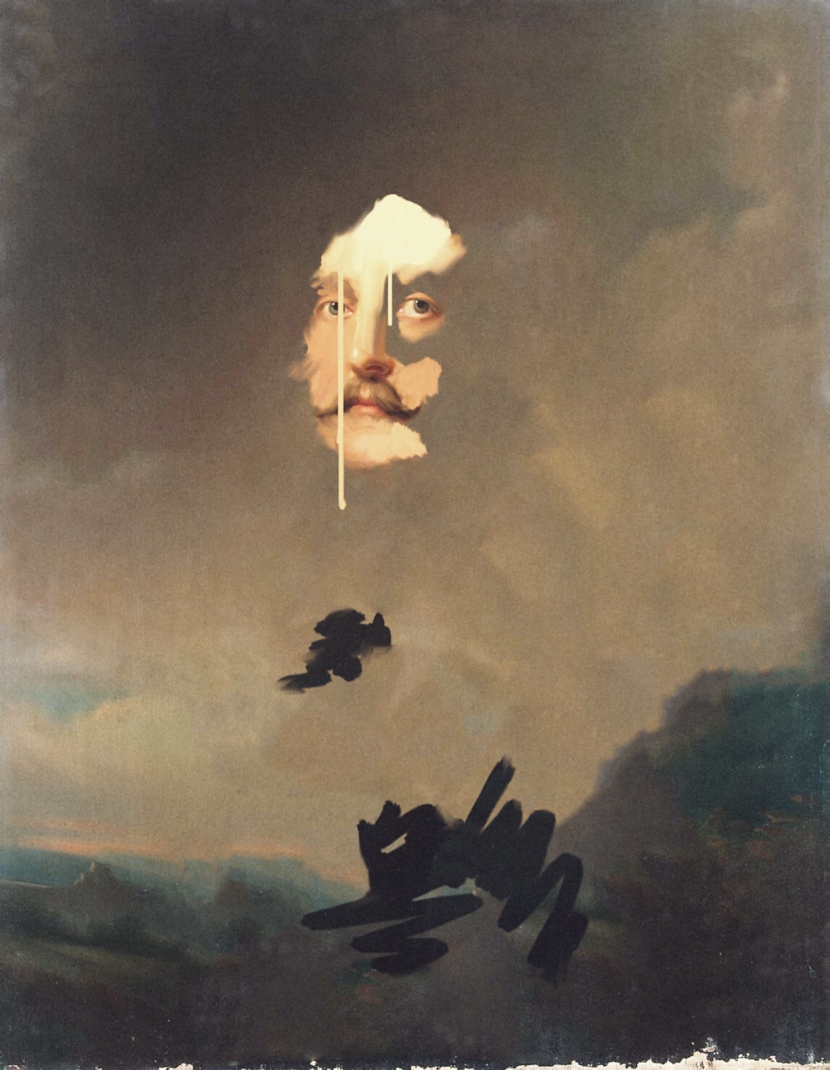
NOCTURNE 109/CHAD WYS
How much are the marks you make on works influenced by aesthetics versus making a specific point etc.?
I once heard that Franz Kline, the great abstract expressionist, used light projectors to plot out his bold, black paint strokes onto canvas. I’m not really interested in whether or not this’s true, but in my experience it could be. It’s difficult to instantaneously and instinctively execute a perfectly balanced minimal composition. It’s difficult to proportion a simple scene expertly and all of Kline’s compositions are expertly balanced. His paintings look and “feel” perfectly proportioned, despite (or because) the fact that they’re often just black strokes on a white ground. The reason why the light projector and the careful planning of the strokes could be seen by some as upsetting and detrimental is because abstract expressionist theory is so mythically built on the process of impulse… like an open nerve violently shooting paint onto the canvas. If Kline plotted out every brush stroke, some might view that as a nullification of the attractive image of an abstract expressionist at work: an artist putting every ounce of his or her raw brilliance onto the canvas in a rapid, divine, artistic orgasm.
The reason I tell this story is because the aesthetics of the mark and the purpose of the mark don’t seem very distinctive to me; well, they do, but not insofar as qualities should change depending on method or intent. Kline’s work represents the same things to me whether or not he carefully composed his compositions. My marks are the same intervention whether or not I have a point to convey or I’m going for a certain brand of color theory. How the viewer responds to the materials and the ideas I’ve put in front of them is all that really matters at the end of the day. Sure, I’ve got some ideas I want to get across, and aesthetics will always be my main tool for doing just that, but it’s out of my hands by the time it gets to you.
You can see more of Chad’s work on his website, tumblr, facebook, twitter and pretty much every other social media platform
Throwback Interview with Hae Jung Lee (2014)
This sixth, and penultimate, interview is with Hae Jung Lee whose work I have always really admired and continues to be up there with some of my favourites.
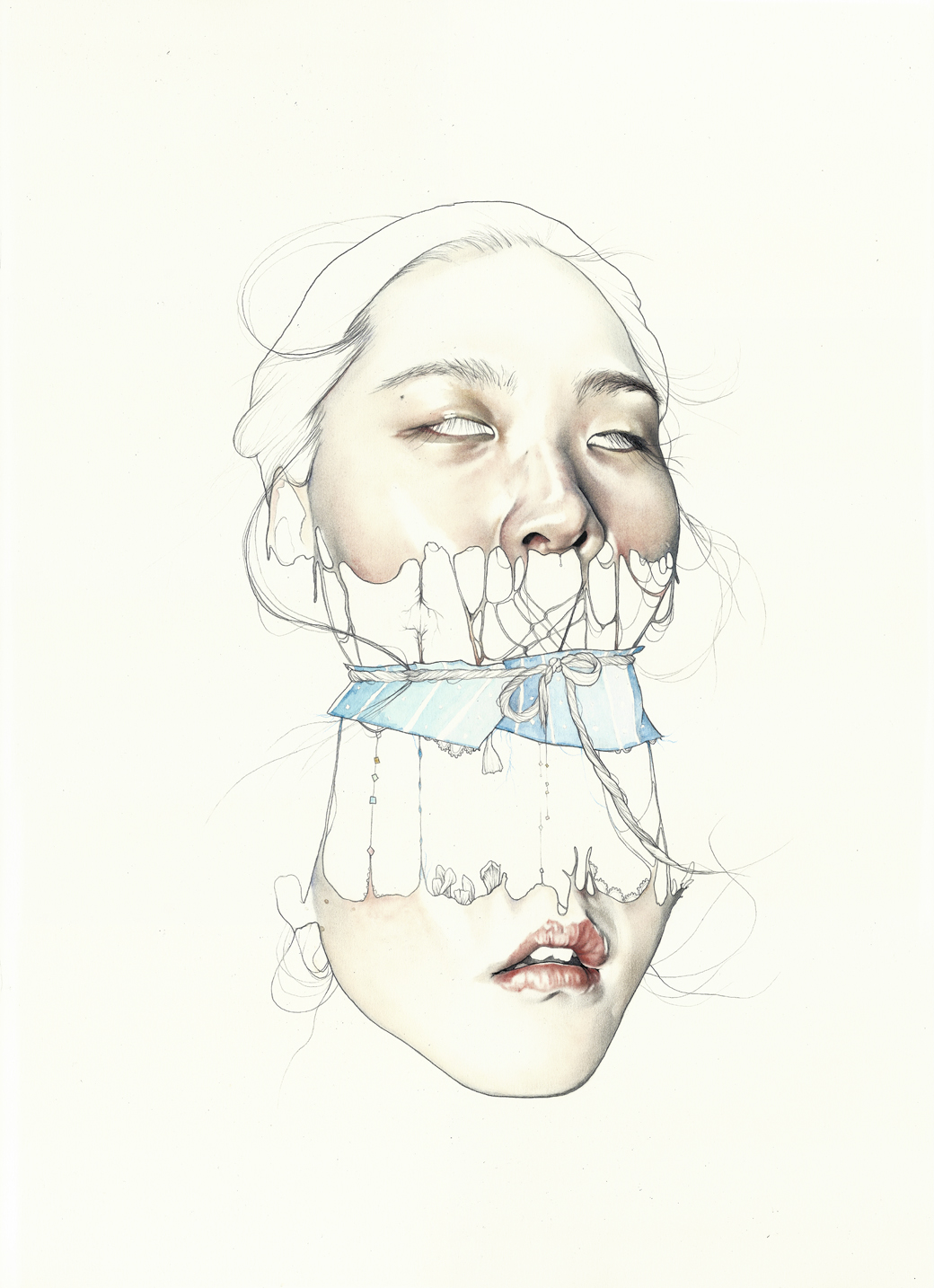
INEVITABLE/HAE JUNG LEE
Capturing the personal moments that may otherwise be forgotten and overlooked is the focus of Toronto-based illustrator Hae Jung Lee’s portrait based work. Lee produces exquisitely rendered fragments of faces, which are framed by and often interact with surreal elements such as mushrooms, bunting, and sewing needles. These surreal elements are Lee’s way of capturing the subject’s thoughts and feelings in as much detail as their eyelashes, so that her highly constructed offer the audience a realistic view of their exterior as well as an allegorical look at their interior. Lee’s work is an archive of the most intimate kind, as she works almost exclusively with images of herself, depicting her own “fragments of memories, moments within time, or internal struggles”. Each of her works is a snapshot of a past, and sometimes present, self.
However, Lee’s work not only acts as personal journal, but also a means of questioning the way we remember things. For me, this can be seen in the looping, almost melting, edges of the portraits suggest both the fabric of memory and the way the realistic elements of our thoughts bleed into the more abstract. Additionally, Lee’s selection of visual mementos become curioser and curioser as we are allowed to delve into the rabbit hole of her psyche, raising questions of what it is we remember and why those things linger in our minds.
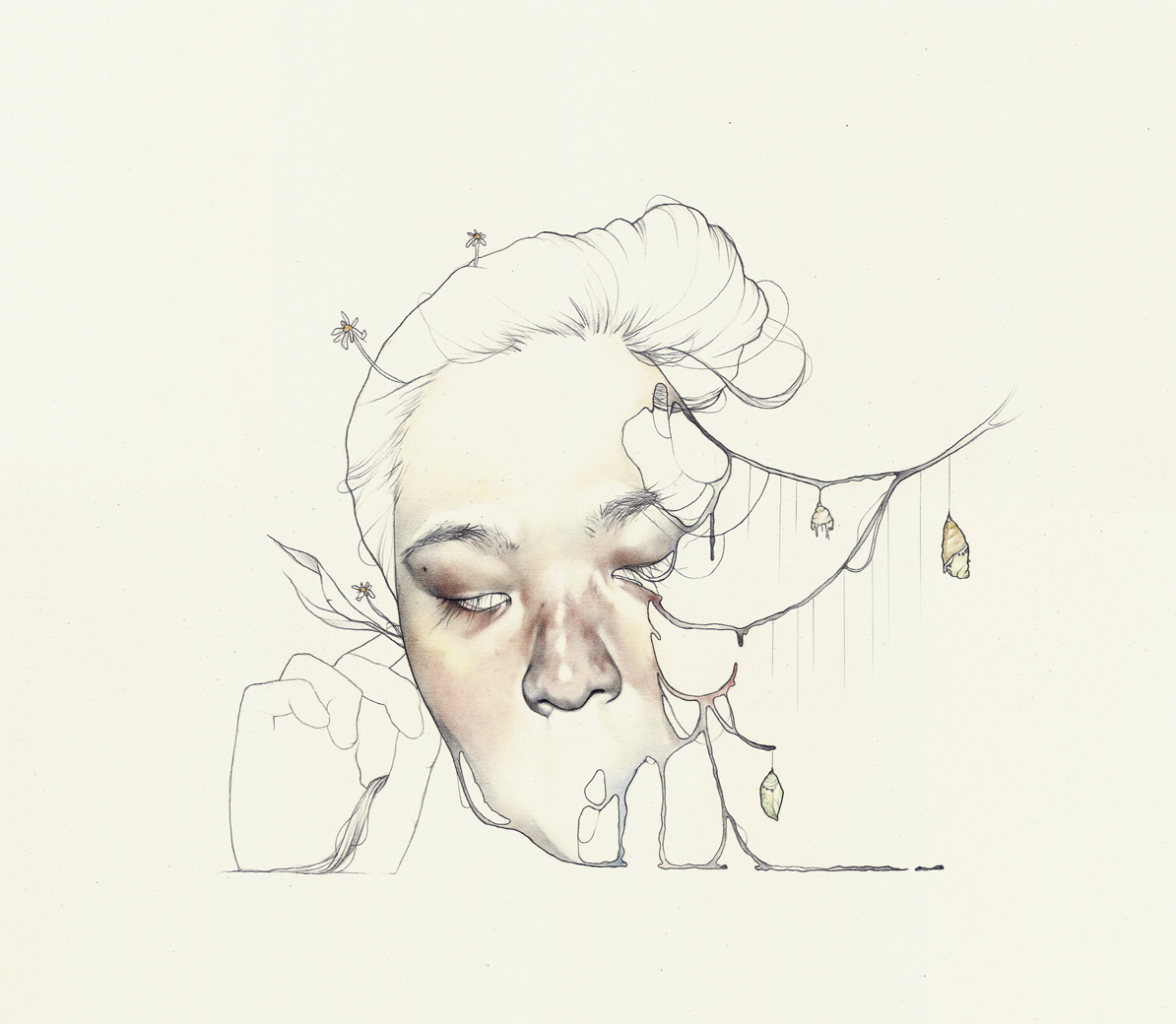
COCOONS/HAE JUNG LEE
Lee’s archive differs from the form of a blog and the cultural phenomenon of the selfie, not only in its considered aesthetic value but also it’s purpose. Due to the symbolic nature of Lee’s work, the hermeneutic process the audience has to undertake means that the portrait becomes an image of the viewer as well as the artist. In Lee’s own words her “works are presented to the viewers in hope of evoking their own life’s details and find beauty in the little details that make up who they are”. This quest to connect with her audience and to prompt them into accessing their own archive of the elements of themselves that “otherwise may be forgotten through time” has led to Lee’s use of, and subsequent popularity on, social media as the most efficient tool we have today to reach out to a vast array of people on a global scale.
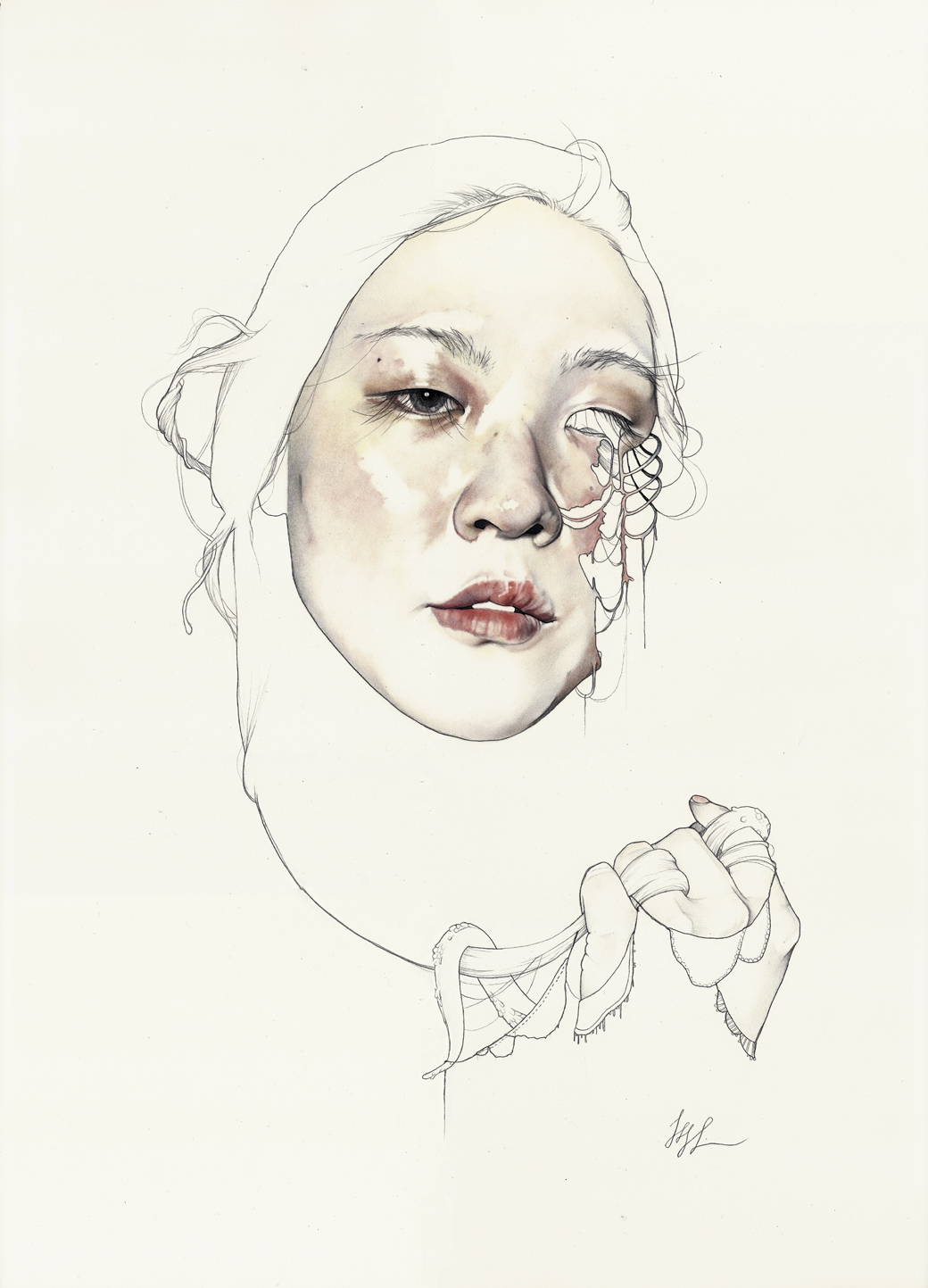
LETTING GO/HAE JUNG LEE
From what I can see you’re currently on Tumblr, Instagram, and Facebook as well as having your own website (unless I’ve missed any). How does the internet feature in your process and life as an artist?
I hold a significant value in the interaction between my work and the viewer within my artistic practice so internet helps me tremendously by connecting my work with so many people all around the world.
Some artists I’ve spoken to have mentioned how the online culture of reposting work has negatively affected them as it means their work goes creditless. Have you had any negative experiences with uploading your work to social media?
I’ve had minor issues where personal works of mine had been mislabelled or important informations have been overlooked, but I guess I could be oblivious to works that are totally uncredited because I would not be able to find out myself. It is definitely an issue that is always lingering at the back of my mind.
Do you look anywhere outside of your own internal structure for inspiration, for example any other blogs?
I don’t think I’ve ever looked for inspiration externally in regards to my art. When I have nothing to draw, that means that I’m either numb and incapable of feeling at that moment or something bigger is brewing inside that is not quite ready to burst apart yet. It never lasts very long though. I don’t force anything when it comes to my art (or anything I do in life as a matter of fact), because that would mean I’m doing it for all the wrong reasons.
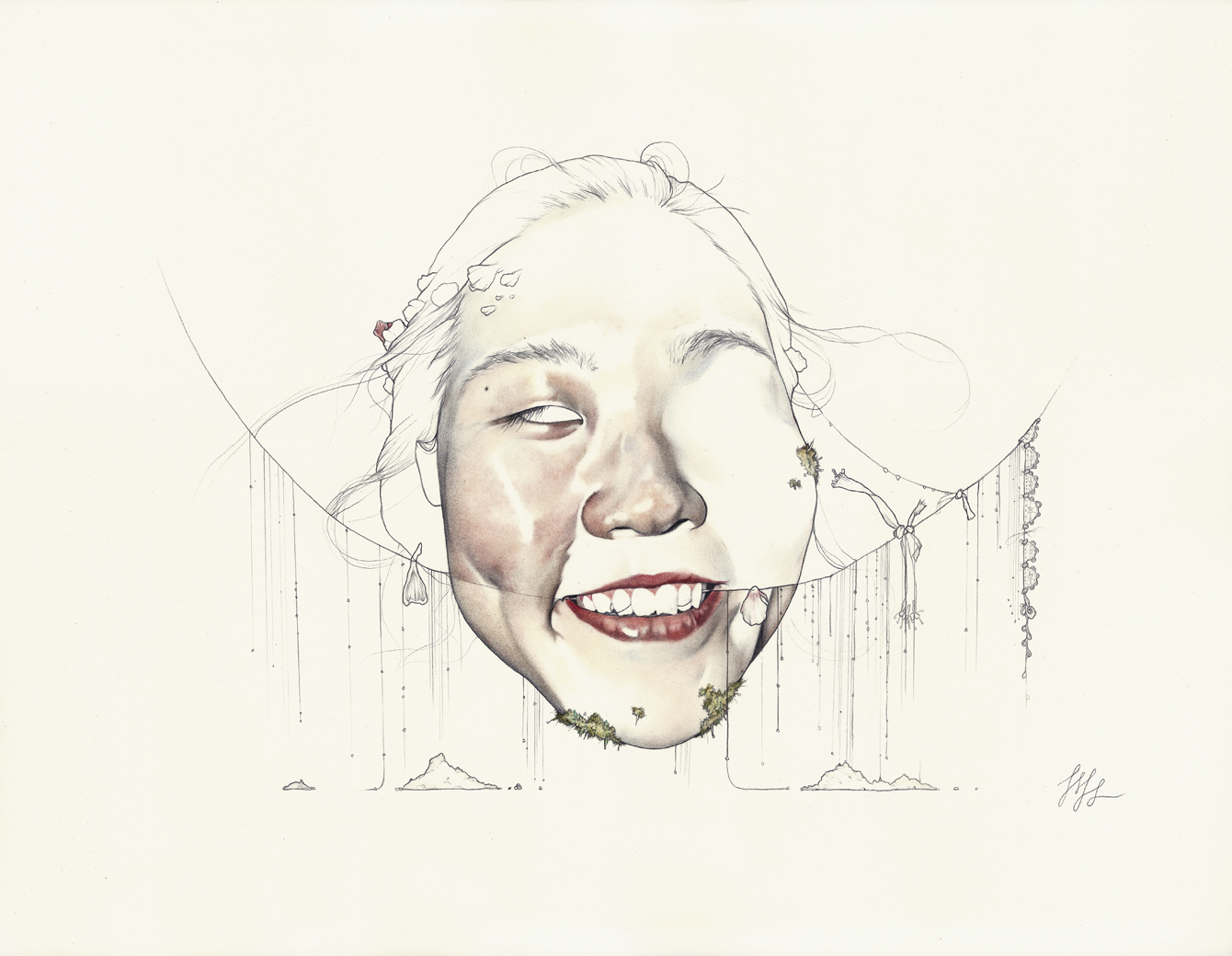
SUGAR RUSH/HAE JUNG LEE
You mention quite often in your artist’s statements that you have an “obsession with documentation”, do you think the current culture of blogging and tweeting to document your life is connected or parallel to that obsession in any way?
My obsession with documentation is a way for me to internalize my thoughts and feelings and better understand myself as an individual. I’ve always had too much unorganized thoughts in my head so it was a way for me to capture those fleeing thoughts and feelings on a piece of paper before it disappeared. It is very much comparable to writing a personal diary. I think the use of social media today is quite different to my own intentions with regards to my obsession. Social media, to me, seems to be a way for people to externalize, expose or to purge out a personal thought or information outwards to the public.
How do you organise those “unorganized thoughts”, enough to structure them into such well composed images?
I would say that each piece I make is mere organized chaos. I find great relief in drawing with a lot of breathing space and well defined lines because it directly contrasts with a chaotic mind. I remember writing on a notepad not too long ago, actually, thinking how I would love to one day create a piece with a single line on a blank piece of paper that contained all my deepest, darkest problems and happiness that defined my life. I laughed at myself afterwards.
As your work is a way of internalizing and processing, do you ever feel uncomfortable sharing your most intimate internalized thoughts to an external audience?
I don’t feel uncomfortable at all sharing my work to the external audience. I would, however, feel very uncomfortable and a bit disturbed if somebody saw my work and knew the exact meaning embedded within it.
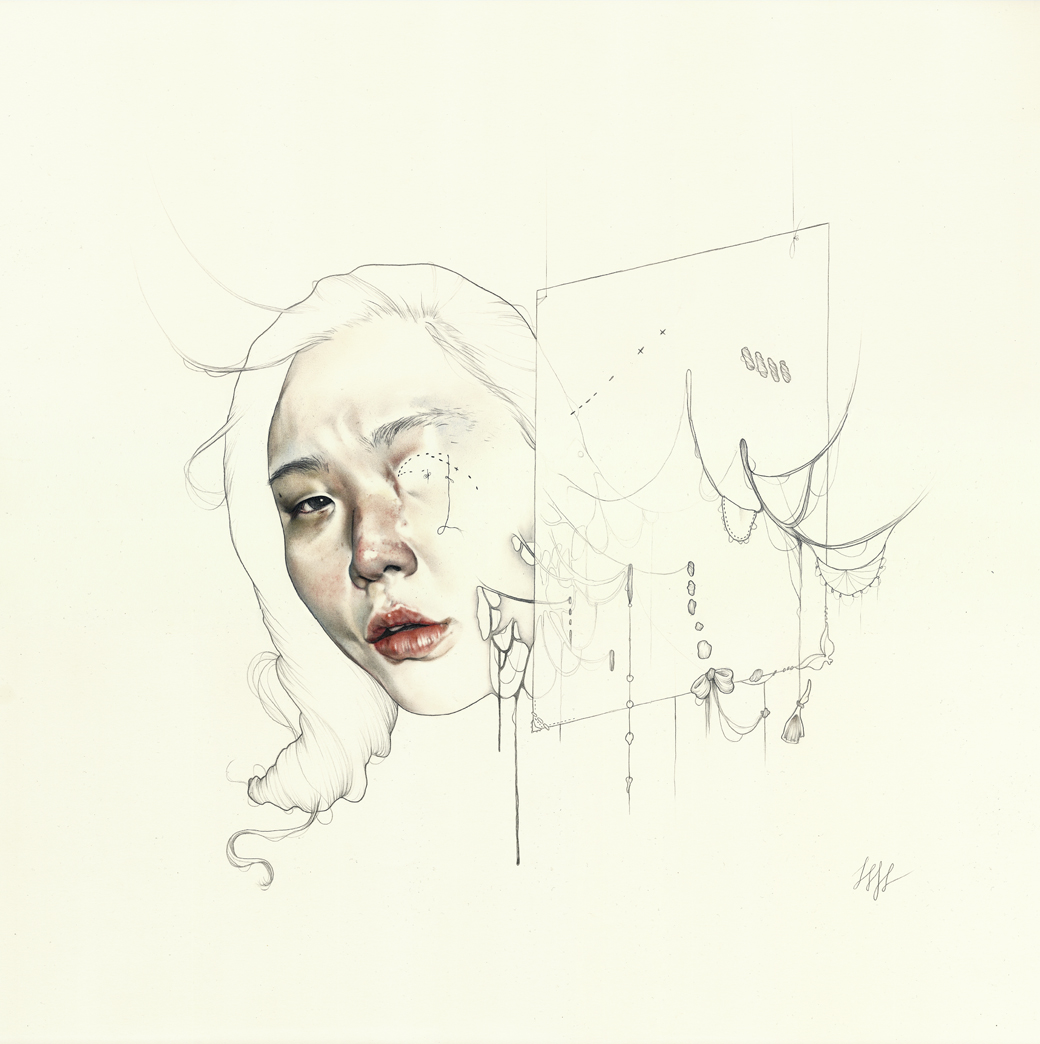
COPY PASTE/HAE JUNG LEE
Your alteration of the form of the portrait is what I find most captivating about your work. Could you say a little on your use of one face (your face) throughout your work and your process of reworking the image of that face to represent the idea you’re attempting to internalize?
The literal use of self-portraiture is quite straightforward and self-explanatory for me in relations to my artist statement. I’ve recently been imagining my face as a sort of a landscape of my mind. It’s hard for me to explain it in exact words as to what that means so I will give an example. When a tear drops off of an eye, a living organism is able to feed off of it and grow around it. It’s a small ecosystem that circulates matters in my mind. By interpreting it that way, my suffering has a purpose and I am, in turn, able to cope better with it, if that makes any sense at all.
That’s a really wonderful way of looking at your art, using it as a way to shape your life philosophy. Are there any other ways in which you feel art helps mould or has moulded your life?
Sometimes I’m not sure if I am shaping my art or my art is shaping me. My art needs my experiences in order to be created but I need my art to see who I am as an individual. Personally, art has opened my eyes to view the world critically with my own perceptions and opinions rather than with collective, conformed ideas acceptable by standards of society.
Within your use of portraiture, you also seem to have created a consistent aesthetic voice. What was the process of finding that voice, and do you ever worry you’ll be trapped by it?
I feel like consistency is what I am always looking for because I’m often bombarded with broken and inconsistent thoughts in my mind. Having said that, people always evolve and change based on life experiences. The consistency I have now is what makes sense to me at this moment based on what I’ve experienced so far. I always try to keep an open mind to things and challenge myself on different levels so I would be deeply concerned if I had the same mindset I have now 5-10 years from now.
So, how do you see your work developing in the future? Or is it completely dependent your personal experiences?
Yes, My works are very much dependent on my personal experiences. I’m often very impulsive and indecisive so even if I had a plan of any kind, I don’t even trust myself on it.
You can check out more of of Hae Jung Lee’s work on Tumblr, Instagram, or on her website.
Throwback Interview with Caleb Hahne (2014)
With Friday comes the fifth of this time travel interview series, this time with the then up and coming Caleb Hahne.
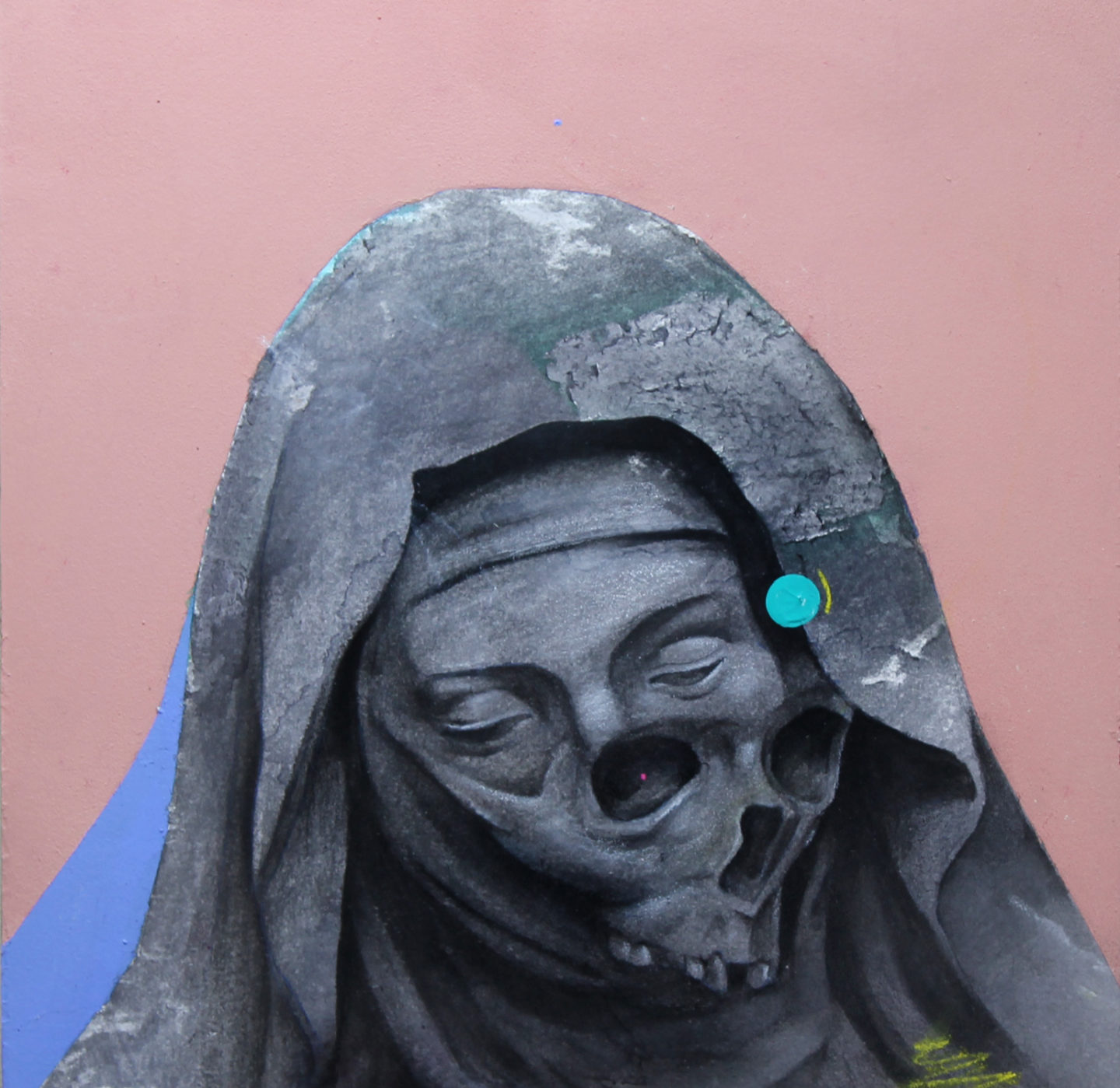
PINK HEAD/CALEB HAHNE
Caleb Hahne is a recent grad (he’s the kind of 21 year old that makes me feel like I’ve done nothing with the same number of years) from the Rocky Mountain College of Art & Design whose work revolves around the utilisation of technology and traditional techniques to confront the allure of a blooming cyber media. Or, in more practical terms, he creates mixed media collages that borrow from classical antiquity, internet culture as well as art theory.
“Mocking life while imitating figures in a relatable, distant, and monumental state is what haunts me, and I love it.”
Caleb merges images of Greco-Roman statues digitally and then transfers that image using good old fashioned pencil and paper, before interrupting the line with intrusions of other media. These new composite images, through quality of line and composition, have a certain fluidity, as if the new conglomerate were moving as one in multiple directions even if you know the case not to be true or possible. The technical aspect of this style harks back to the master draughtsmen of the renaissance whilst drawing from the modernists in the sense that even if these aren’t readymade objects they’re readymade images within the audience – it is impossible to shake the fact that you are aware that these are drawings of images of statues which are unmistakably the work of someone else and which have been etched onto your cultural consciousness through years of societal programming.
“The internet seems infinite, and it acts as a purgatory for cyber-souls”
Caleb draws inspiration from his relationship with technology as a child of the internet age (Caleb was born in 1993), the graffiti art he saw as a child, as well as more theoretical sources such as the ideas found in texts such as ‘7 Dada Manifestos and Lampisteries’, ‘The Broken Frame’, and ‘The Poetics of Space’. He uses his art a way of drawing out the questions he has from life, and the aforementioned texts, but leaves much of the interpretation of any potential answer in the eye of the beholder.
“I’m currently interested in light as a metaphor of life, and how my stone figures mock life as they sit in a state of infinite death.”
As well as putting work online on his website and across social media, Caleb was recently invited to be part of a group show at Modern Eden Gallery in San Francisco, alongside: Marco Mazzoni, Shawn Huckins, Meryl Pataky and many more.
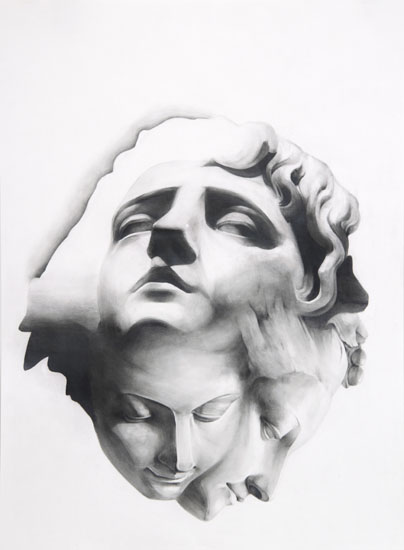
BENEATH THE MOON/CALEB HAHNE
You use a mixture of traditional and technological techniques, what was behind that decision?
I studied illustration in college and I found that the first half of my education was rigorous in the traditional practice of art and transitioned to the digital. I had some sort of existential crisis because I couldn’t keep up with the change that was happening so quickly. At the time I was reading a book called 7 Dada Manifestos and Lampistries by Tristan Tzara and in it he talks about how the biggest Dadas of them all are those in the French Academy and that was the form of education I was trained in. So as I thought about the this form of training and the practice of appropriation of the Dadas, I combined digital collage with traditional drawing and began illustrating the questions I had.
With the practical aspect of mixing the traditional and technological, what’s the process behind your collages like?
It takes quite a bit of time. I usually have an idea in my head of what I want. It’s an arrangement of a series of images that blend together until I feel it’s right. I won’t start a drawing until I’ve made about four or five collages. I’ve got hundreds of demons floating around my hard drive that have never been seen. I’ll work on the collages for days and sometimes weeks before I feel that it should be drawn.
You also seem to take cues from a lot of classical images, how do you feel that parallels or intersects with the current ease of disseminating work – especially online?
Well classical artwork has always stood out to me so I feel that I’ve been inspired to explore what they were doing ever sense I started making art. I also feel that classical work is most easy noted so I wanted to put old and new into a filter to see what would blend together. Appropriation has been a constant theme in my work so I figured I would begin collaging the sculptures together, then I realized during the hunt for the images to collage, that the internet seemed to be the most valuable resource. I found more images in less time and could use the same material over an over.
In your artist’s statement you say you’re interested in “confronting the allure of a blooming cybermedia”, could you explain that confrontation a little and why you think it’s an important pursuit?
Most people i’ve met say that they make art about what surrounds them; technology surrounds me. I was born in ’93 so I’ve had the chance to experience the world change in so many ways. I don’t know what kind of work I would be making if it weren’t for the vast wealth of technological resources that are readily available. As I mentioned previously, I like mixing old with new, remixing it into images that are reflections of death. The internet seems infinite, and it acts as a purgatory for cyber-souls
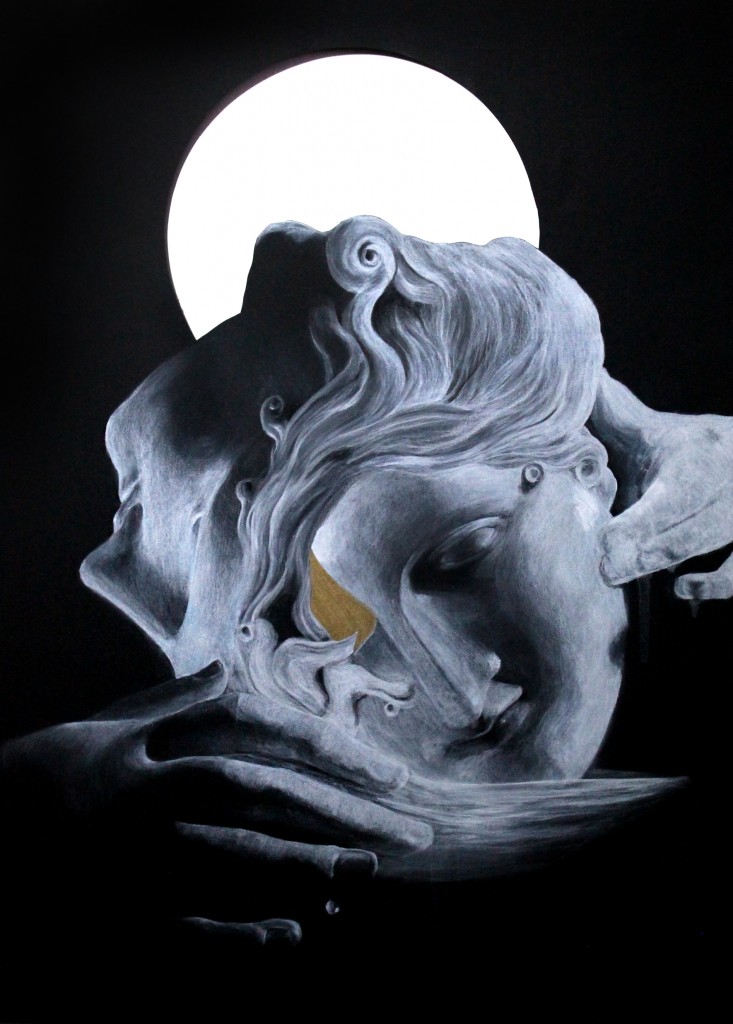
WHITE PIECE/CALEB HAHNE
As an ‘up and coming’ artist how necessary do you feel it is to be represented online and across social media?
I think it is extremely valuable and necessary to have an online presence. It’s so easy to post work onto many social platforms. Instagram has been a surprisingly enormous contributing factor to getting my name out. And if it weren’t for some sort of platform, I wonder if you would’ve ever seen my work?
In addition to posting work online, does the internet feature anywhere else in your creative process?
Not lately. I’m currently interested in light as a metaphor of life, and how my stone figures mock life as they sit in a state of infinite death. A lot of the work I have made is surrounded in a void of white space. I have spent a lot of time thinking about what the space is a representation of. The drawings are immortalized in an echoless space that can be related to that my pervious comment about the internet. The void represents an enormous unfathomable space that limitless. At the same time, I think about the Buddhist concept, Sunyata which translates to “emptiness” or “openness”, it’s a state of mind and/or a meditative experience. I’m playing with two ideas: a empty space which represents nothingness, or an emptiness that represents the nothing that is something.
You’ve mentioned both Buddhism and the Christian concept of Purgatory, how strong of a role does religion and/or theology play in your work?
I get asked about the role religion plays in my work pretty often and in some cases offend people because the altering of their original image seems “sacrilegious”. I’m not entirely interested in confronting those ideas as I am interested in using those theologies as a framework to help illustrate the exploration of my practice.
Why do “reflections of death” hold such an interest for you?
Death surrounds us. Questioning and confronting one’s mortality is difficult.
If the internet is “immortal” do you ever feel any pressure to create something that will stand the test of time?
This is an interesting question. As I start exploring my work more and more, I feel less attached to its life. The process is important, I’m not sure the outcome/completion of the piece means anything to me.
In a similar vein, how do you feel about being able to look back over archives of your work online?
Ah it’s awful haha. When I see I piece of mine on google or anywhere else that I’m not so happy with, I have to look away.
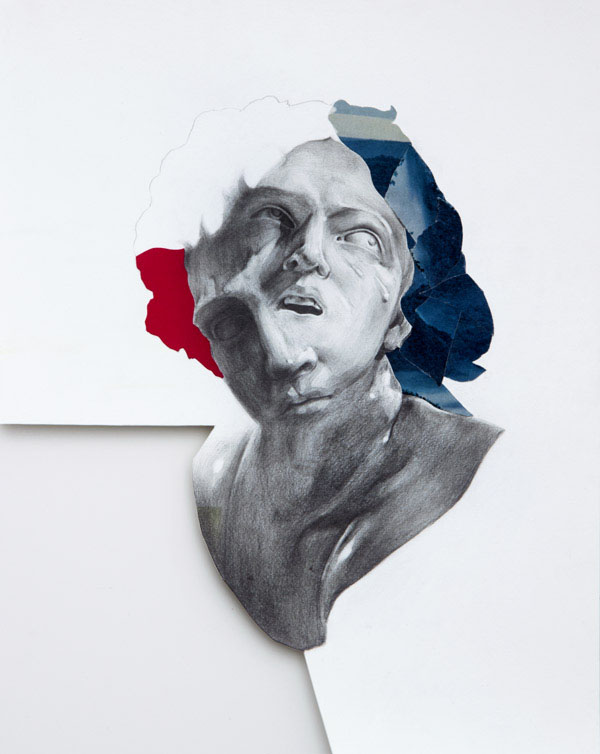
IMAGE/CALEB HAHNE
I think I remember you mentioning recently that you were going to be a part of a big collective show including another one of my favourite artists, Marco Mazzoni, could you talk a little bit about getting to display work with guys like that? And maybe a little bit about the kind of work that you’ll be putting up there and in the future?
I’ve looked up to Marco Mazzoni since I was in high school, and when I got invited to be a part of that show I was humbled. Having the opportunity to show with any big names has reminded me that I got to that point by working very hard and to not stop because of the opportunity. My own little mantra is to keep my head down and keep working.
Throwback Interview with Evie Cahir (2014)
Interview number four is with all around awesome lady Evie Cahir.
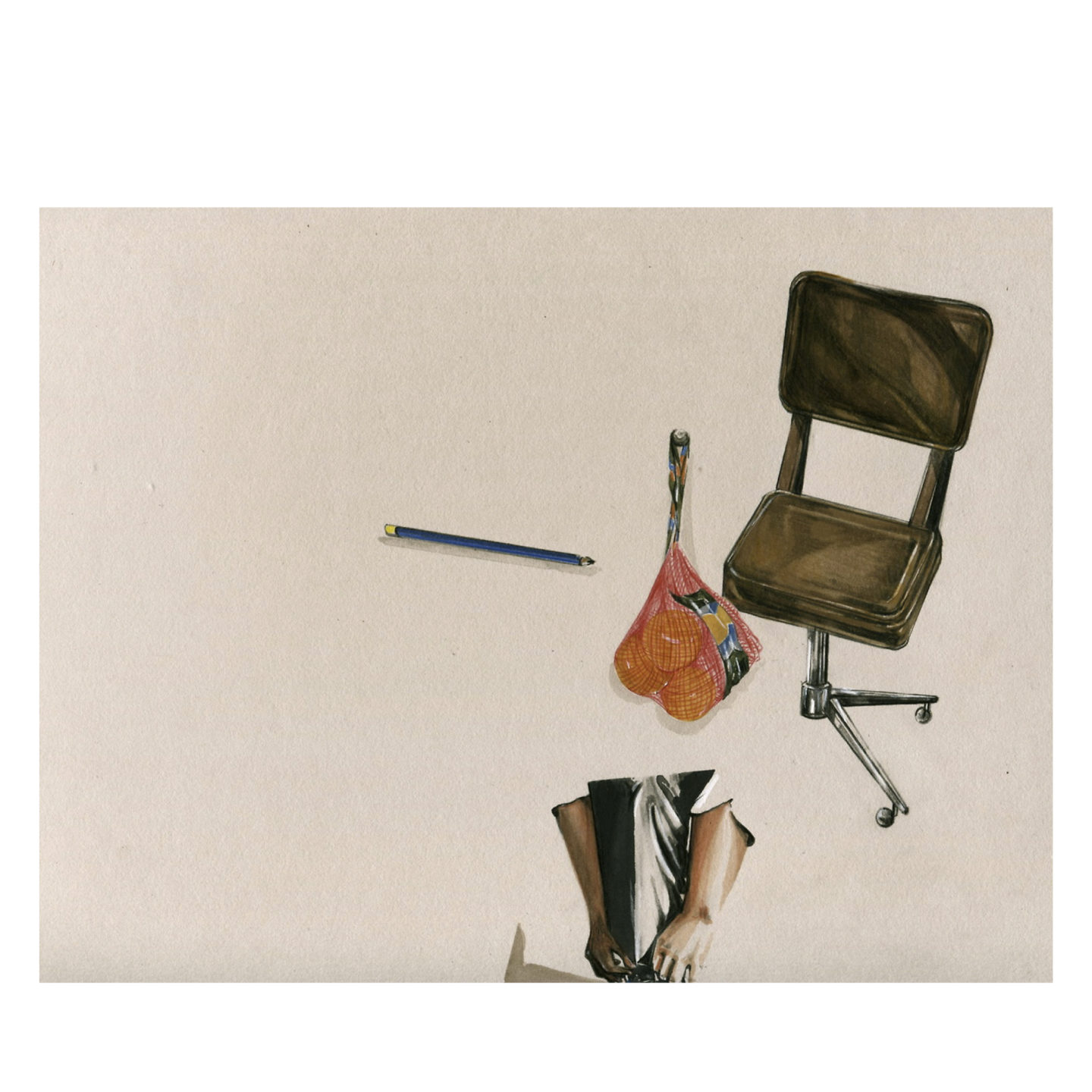
IMAGE/EVIE CAHIR
Melbourne based artist Evie Cahir’s watercolour illustrations depict the little moments in life. Each fragment is carefully detailed and archived, then left to stand alone in a frame of negative space, which just begs you pay attention to what’s at its focus. That focus is what’s most interesting about Evie’s work, because she zeroes in on the everyday and makes it poignant.
“I try not to consider why I draw the things, I think its more interesting to let others do the work.”
Her works have included everything from burgers to houseplants, cartoon bunnies to hareem pants. Mapping Melbourne, a recent series of work which was turned into a zine, took inspiration form the sights Evie had passed on public transport. In fixing the transient scenes, Evie presents her life from a perspective that wouldn’t necessarily otherwise see. Her style reflects that alteration of point of view, with slight shifts in perspective that remind you that, whilst her work is primarily realistic, you are seeing the world through Evie’s eyes.
“I have learned that the internet works in mysterious ways”
And the world through Evie’s eyes has proven to be a very popular sight, with a highly frequented blog and a shop where originals and zines seem to fly off the virtual shelves. It’s understandable why her blog is so popular and hard to imagine a work that fits the medium any better; it’s personal, it tells a story, it offers an original outlook, it’s relatable, and best of all it’s so good to look at.
“The compromise in creating editorial work is real.”
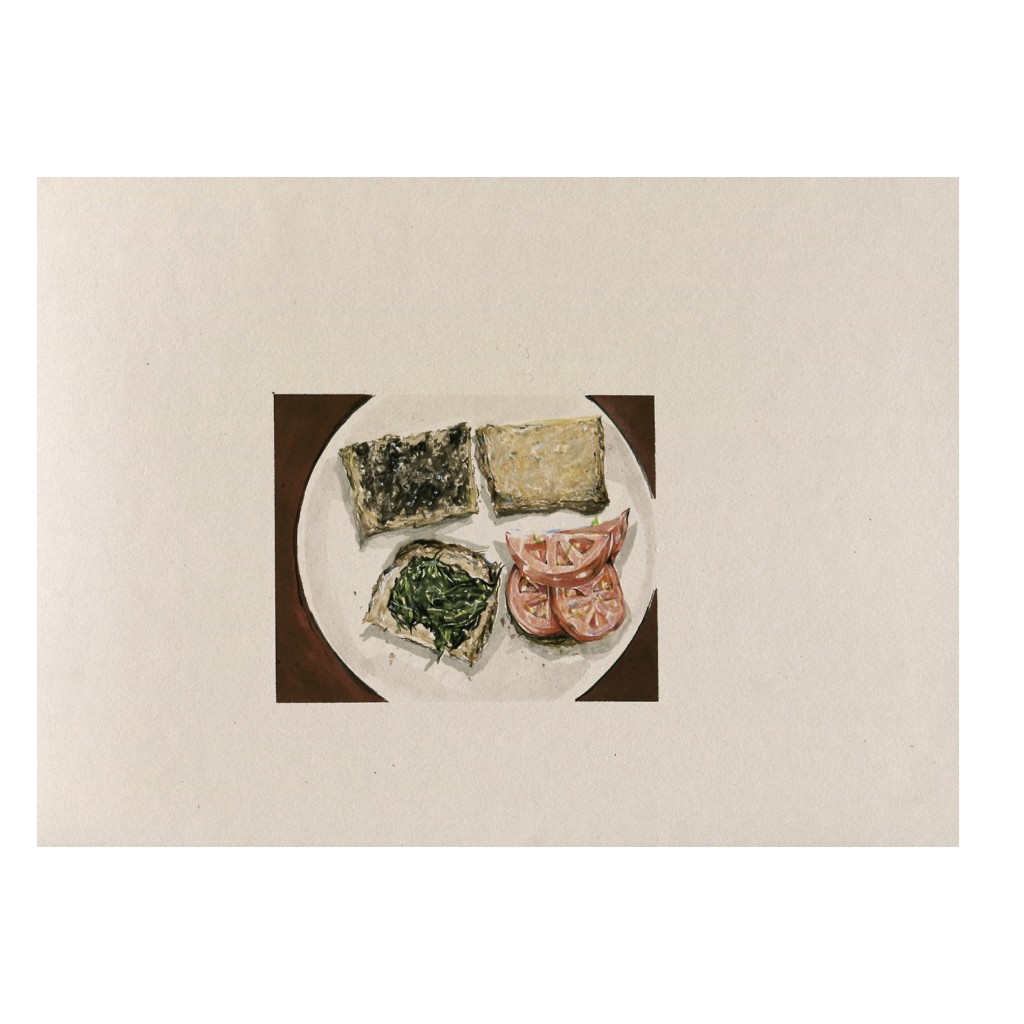
IMAGE/EVIE CAHIR
As well as pursuing her own whims and collating them into zines and comics, Evie has created editorial work for the likes of Vice and Neon magazine.
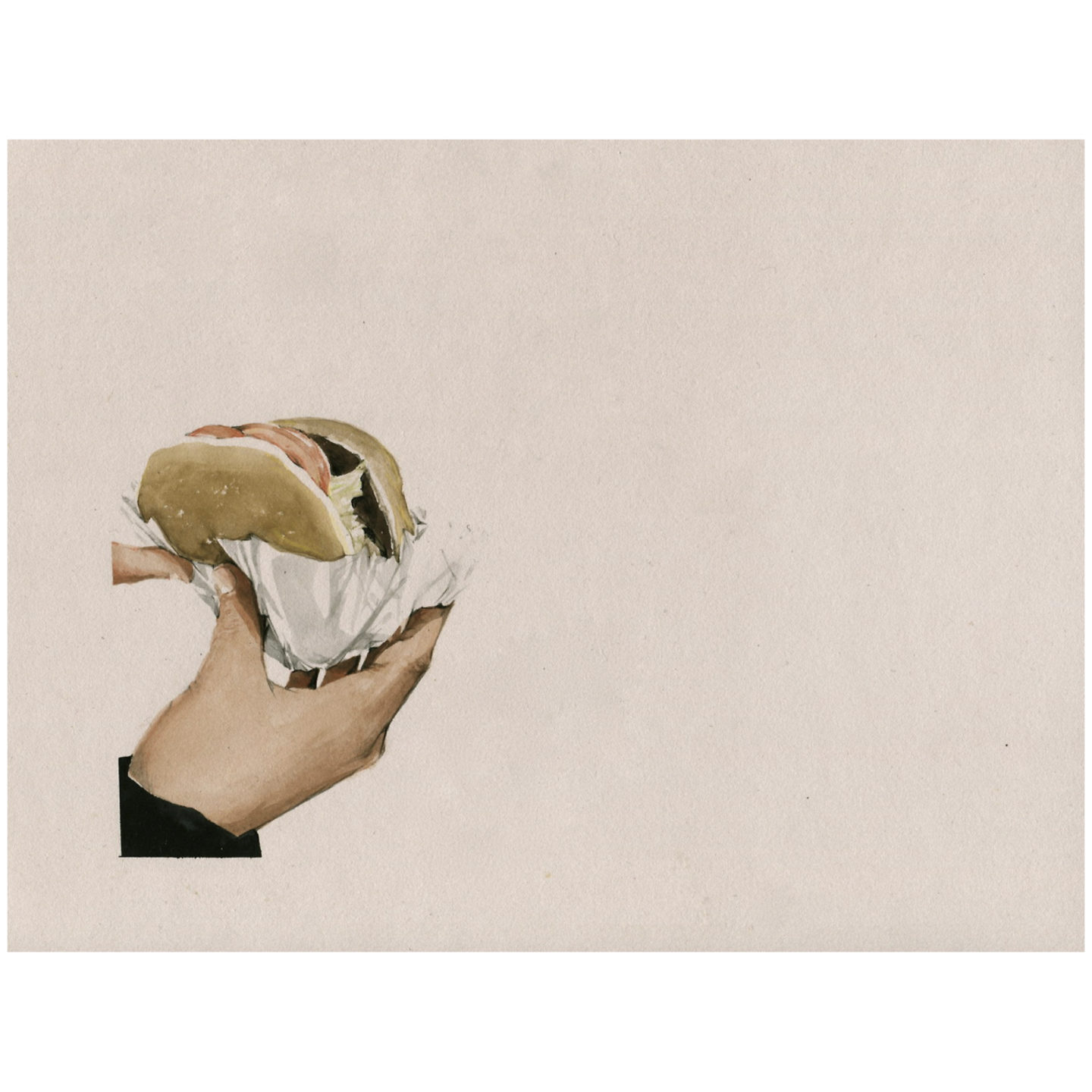
IMAGE/EVIE CAHIR
You’re on facebook, instagram, tumblr (where I first saw your work), you have a big cartel, you have a big online presence across a number of social media outlets. How important do you feel social media is to your work and sharing it, and do you have a preference between those outlets for sharing different things?
The internet and all the social-media outlets that follow are vital when it comes to sharing my work. Without it I would still be leaving little zines in toilets or pubs, slipping them between train seats and posting them to pen-pals, which is all I ever did before creating a Tumblr or sharing my work online. My online-outlet preference depends on what I am doing —
Tumblr for an online documentation of all the work I create and Instagram to post select work to with the aim of generating a strong aesthetic/online persona and to ‘network’, organize art-swaps and obviously to track other artists work.
How has having a fairly large following (100+ notes on almost everything you post to tumblr) affected you and/or your work?
I used to spend quite a lot of thought trying to analyze why certain work instantly hits it off with Tumblr and rakes in 72,378 notes and other work that I value more clocks in just 31 notes over the weekend. There is no answer to this, I have learned that the internet works in mysterious ways.
It has affected my output as posting work becomes a personal challenge — to post more regularly and with higher quality work. Gotta give the people what they want!
When posting works are you conscious of how they will be received/reacted to by your audience?
I am definitely conscious of reception, I regularly second-guess myself when it comes to sharing work — Not because I am wary of sharing provocative work, just of generating work that is not unique in its message, subject matter or theme. Along with the initial reaction, I am conscious of constantly creating fresh work while ensuring that it complements the rest of my work aesthetically.
Basically, I have a very discerning inner-monologue that critiques work in a way I expect the audience to, e.g. “Evie drew an avocado and headless torso again, how ‘ground breaking’”
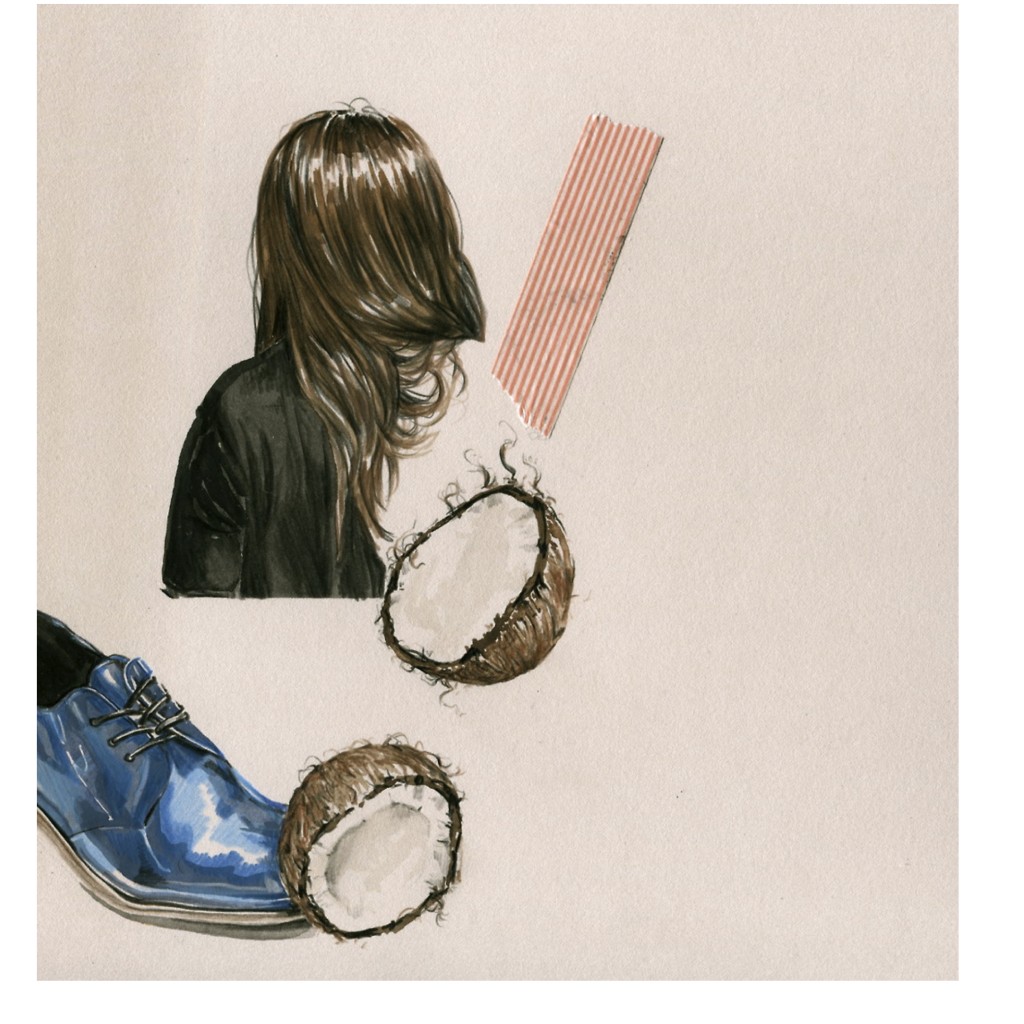
IMAGE/EVIE CAHIR
Do you ever look back over your online archive to see how your work has changed, and if so how do you feel about the earlier stuff?
Looking back over work that is over a month old is painful, I have a back-log of almost four years on Tumblr of work to avoid looking at! Going through older work is like re-drawing it and being reminded of your short-comings (poor painting skills and pencil-prowess) On the few occasions I have looked through the archives (on Tumblr, giant folders in my wardrobe and little sketchbooks hidden around my room) I found that I could easily discern what drawing-stages and life-changes were happening as I looked through it all, majority of which (87%) was not good!
Your works isolate moments and objects that may otherwise be overlooked and frame them in space, could you explain a little bit your thoughts behind this practice?
Simply put, this practice of creating work that revolves around capturing over-looked details, objects and moments is an extension of personal thoughts and experiences. For me, drawing and painting little scenes stems from the need to document and record a feeling I have felt.
I try not to consider why I draw the things, I think it’s more interesting to let others do the work.
You said your work is about “personal thoughts and experiences”, from a technical stand point, does that mean you work from life for inspiration or do you use photo references as well?
Predominantly photographic reference when it comes to creating a final work, though for initial sketches I will work from life. These preliminary drawings act as a record of scenarios and settings to draw inspiration from, as I fill small moleskin’s with details such as: train platforms, lists of items to reference in future work, the hair of a certain commuter, an old man’s dog or books being read on the tram.
With the personal element to your work, do you find it a struggle to do editorial pieces or commissions seeing as they wouldn’t have come from your own experience?Definitely, creating editorial illustrations for clients is usually a challenge I relish, in that I get to draw objects or scenarios I would not regularly draw. Though when it comes to contracts and on-going themed editorial work (For example, a yearlong contract to create monthly comics about one-night stands) it has been a struggle to create work that fulfils the brief but also is work that I am not embarrassed to put my name to or have printed. The compromise in creating editorial work is real.
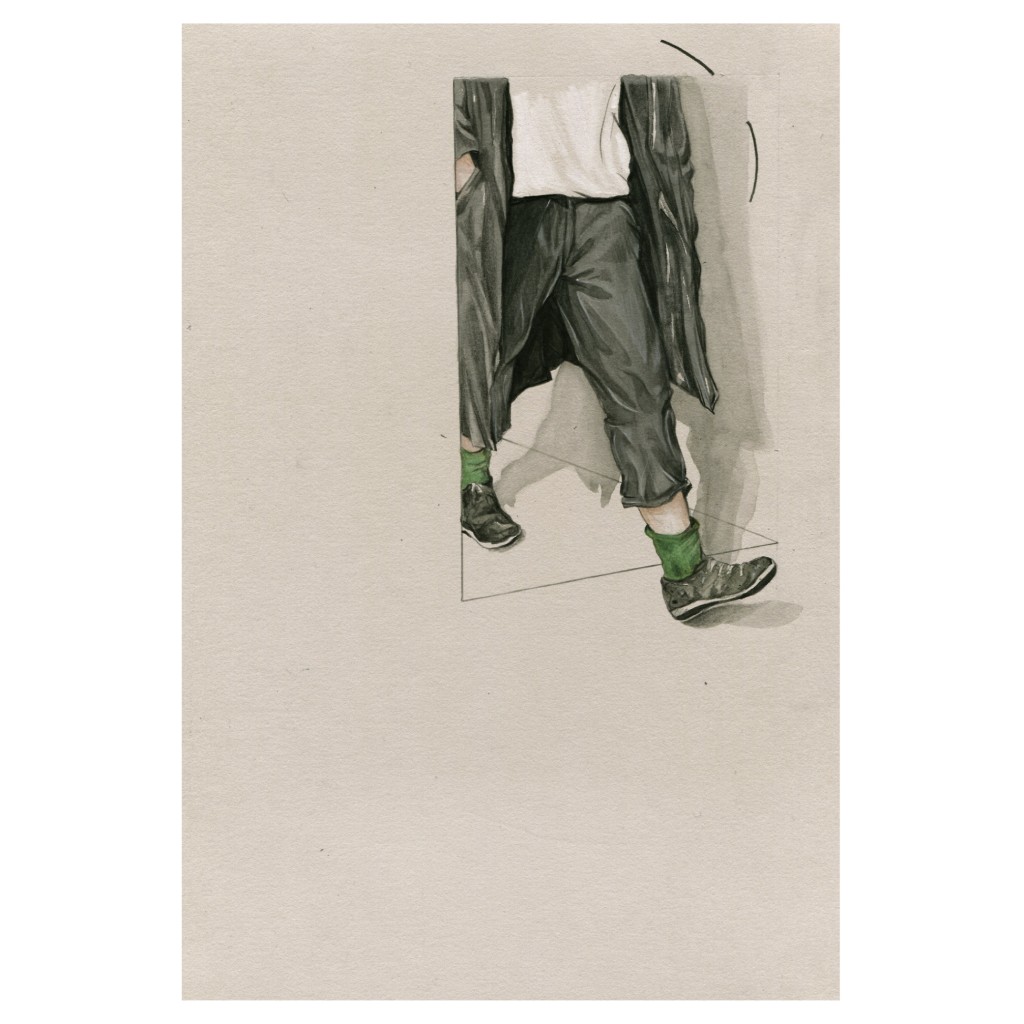
IMAGE/EVIE CAHIR
In a similar vein, do you look to other artists, or blogs etc., for inspiration? If so who?
Definitely, I wonder if I spend too long looking at other peoples work!
Whenever I’m not drawing I’m looking through the work of:
Lauren Spencer King. Stanislava Pinchuk (Miso) Greg Eason. Aidan Koch. Moebius. Dane Lovett. Henri Matisse. Claes Oldenburg. Sam Alden. Jonathan Zwada. Vija Celmens. Michael Borremans. Brian Ferry. Elsworth Kelly. Ill Studio. Hannah Hoch, this list goes on…
That’s quite a long list of inspiration (definitely a good one though!), how do you take references or inspiration from those works and use them to influence your own?
The referencing of influential figures is most apparent in techniques picked up and a sense of aesthetics and layout applied.
For example, the most recent references cropping up in my work is the use of washes of watercolor to slowly build up a certain texture and off-centered composition of isolated objects/items.
What would you say the “trending themes” you’ve seen or picked up on are at the minute?
Trending themes I have noticed floating around on the sites, Tumblrs, Instagrams I visit regularly include but are not limited to: the glamorizing of depression/sadness via comics, drinks in glass jars, food photography taken from birds-eye-view, Photoshopping yourself into a Drizzy photo-montage, food, high-contrast/saturated light in photographs, food, ‘still life’ themed photographs, Minimal Bauhaus-inspired graphic design layout for book covers, Tapestry, taking photographs of your own hand holding something small, photographs of backs of heads. The list goes on…
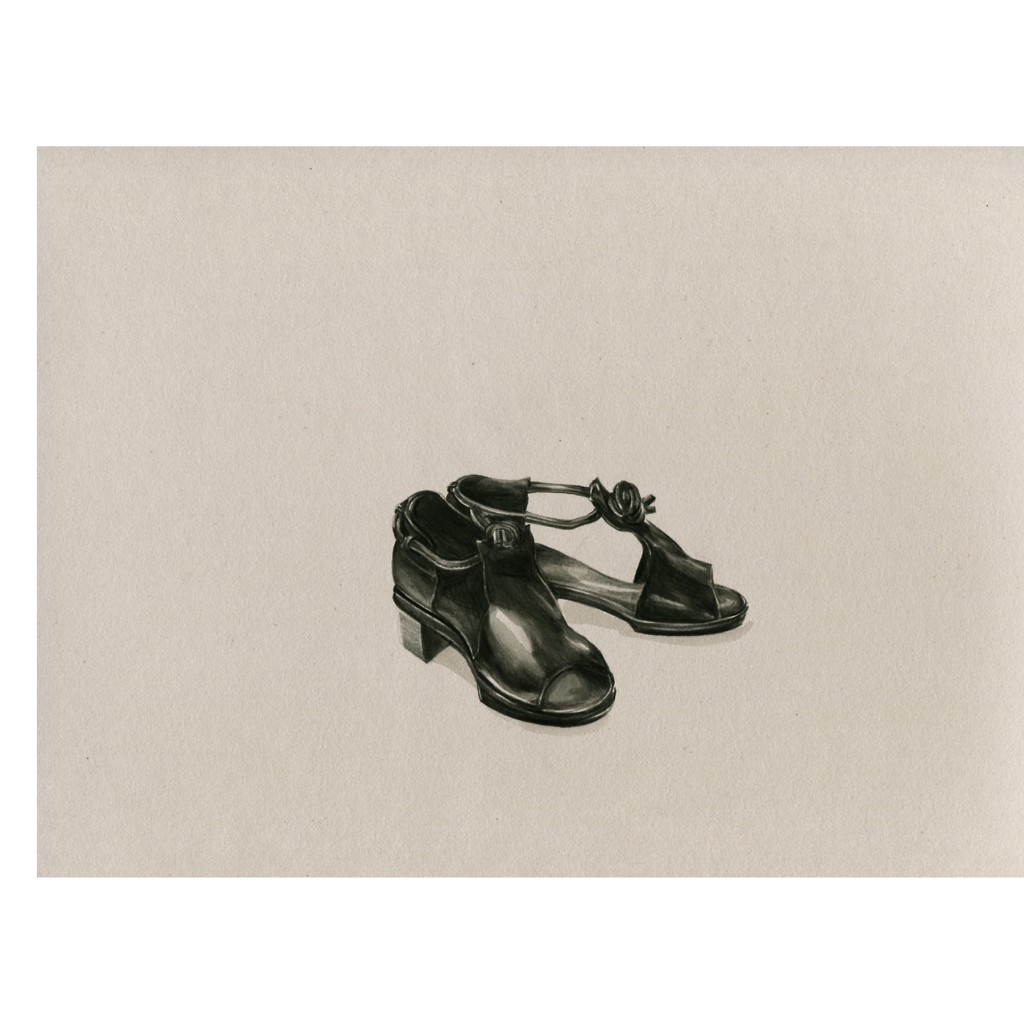
IMAGE/EVIE CAHIR
It seems as if your work has become a little bit of a journal, do you ever feel uncomfortable sharing your work publicly? Especially if you know that other people will be looking through your archives?
Not particularly, I feel like the shame associated with going through past work is just a personal hang-up, though I know of other artists that feel similarly about their own archives. I have only ever felt uncomfortable or self-conscious about sharing work when I’ve been asked if I am referencing personal experiences in my work, especially my comics/narrative work
(“Did you draw yourself crying that last one you posted, Evie?…” etc.).
Within your concern of creating “fresh work” are you ever conscious of not falling into trends, or starting to look like other work that’s popular?
Of course. I struggle with overcoming the fear of creating stale work almost every time I draw.
Whilst it’s healthy to be aware of trending themes, subject matter or style amongst others it’s even more imperative that I work to improve my own technique. I try to reconcile this perpetual drawing-fear by telling myself that if my drawing method is below average or rusty then creating fresh work is the least of my problems!
If you perceive your drawing method as being below average, or rusty, then creating fresh work is the least of your problems: what are the greatest challenges you face?
Drawing challenges are always shifting from one issue to another, last week it was feeling uninspired and expecting others to inspire me and today it is the consumption of too many coffees for me to concentrate.
The most challenging and reoccurring issue when it comes to drawing would be not being able to ‘develop my own style’, ‘visual language’ and overall aesthetic. This over-analysis of my own work usually stems from too much time on the internet, as I compare myself to competent and confident illustrators (please refer to list of inspirational artists)
I find this Identity Crisis can be alleviated by getting back to basics and refining drawing skills and spending less time on the internet!
Where do you think your work is going next? Or where would you like to see it going next, in terms of content, aesthetics, platform or just the next show you’re doing?
I would love to see attainable future plans and long-term goals converge — these plans revolve around self-published books, residencies, collaborations with drawing-heroes, setting up a studio space, steady editorial work and solo exhibitions.
- Newer Posts
- 1
- …
- 80
- 81
- 82
- 83
- 84
- 85
- 86
- …
- 90
- Older Posts


